The history of the first microprocessor video games
- Transfer
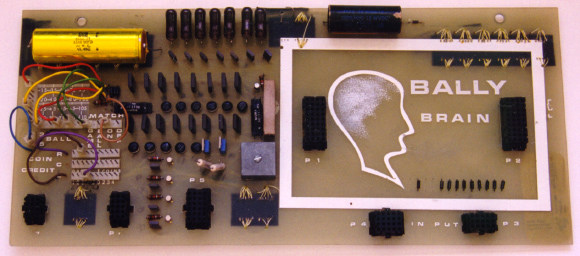
Recently, I, with other researchers, have written and talked a lot about the early microelectronics industry. There are many more puzzles associated with this period of birth until the moment when designs on a single chip and mass production appeared on the scene. It was interesting to think about why and why people started using microprocessors at all, because it was not only Apple’s story about rebellious democratization of computer technologies. First of all, for large companies, microprocessors were tools for creating peripheral devices; initially they were not considered as the basis of modern computing.
There are many applicants for the title of the first microprocessor game. Keith SmithHe revealed this topic in a series of posts, and in my subsequent articles I will talk about two main contenders. However, there are also stories that need to be collected and researched in detail, mainly revealed through my study of court documents and articles in trade publications. We will step by step examine where these experiments originated from and how they are related to the generally accepted history of the mass market of microprocessors.
Intel
The Intel MCS-4 processor series went on sale in mid-1971 for the first time, creating the first commercial niche for microprocessors (their status as “first” can be challenged, but for now we will bypass this topic). Of course, the CPU 4004 was created specifically for the Japanese calculator, and, perhaps, it seemed to people that this would be the most difficult task to be performed. It was believed that microprocessors should be used as controllers for devices such as cash registers, and no one considered them as devices for performing computing tasks on a separate machine.
However, Intel still considered this possibility. Around 1972, the company created a clear demonstration of opportunities for Magnavox, which owned the license for Odyssey technology. It is unknown how Intel contacted Magnavox, who created the demonstration, as well as other details besides Ted Hoff’s comments in the video. "We discussed this with Magnavox, but they were not interested."
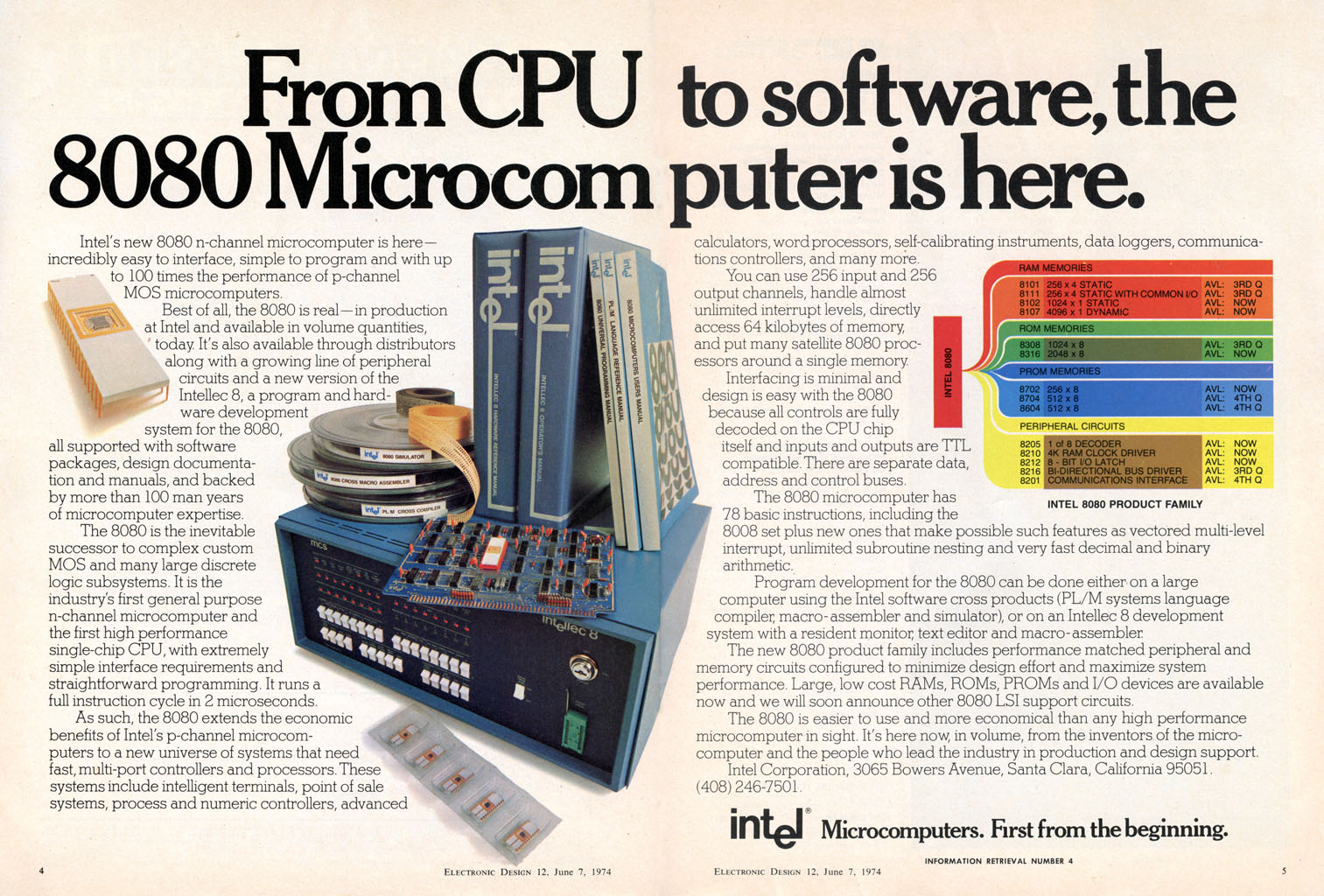
Intel advertisement in 1974, describing the main uses of the company's microprocessors.
In the video above, a copy of this demo appears several times. The logic runs on a SIM-402 prototyping board: in a demonstration, a white spacecraft flies against a black background along a diagonal screen pattern. When it is hidden behind the right edge of the screen, it appears on the corresponding vertical line to the left, but in Spacewar! There was no loopback function. This is not a game or even a real program, but just a proof of concept. It runs on 4004, which is completely incapable of performing any complex video game. The demo posed more questions than answers, so Magnavox refused it, but it’s rather interesting that Intel will still become a Magnavox partner when it finally decides to use a microprocessor in Odyssey². But this cooperation did not arise as a result of the 1972 negotiations.
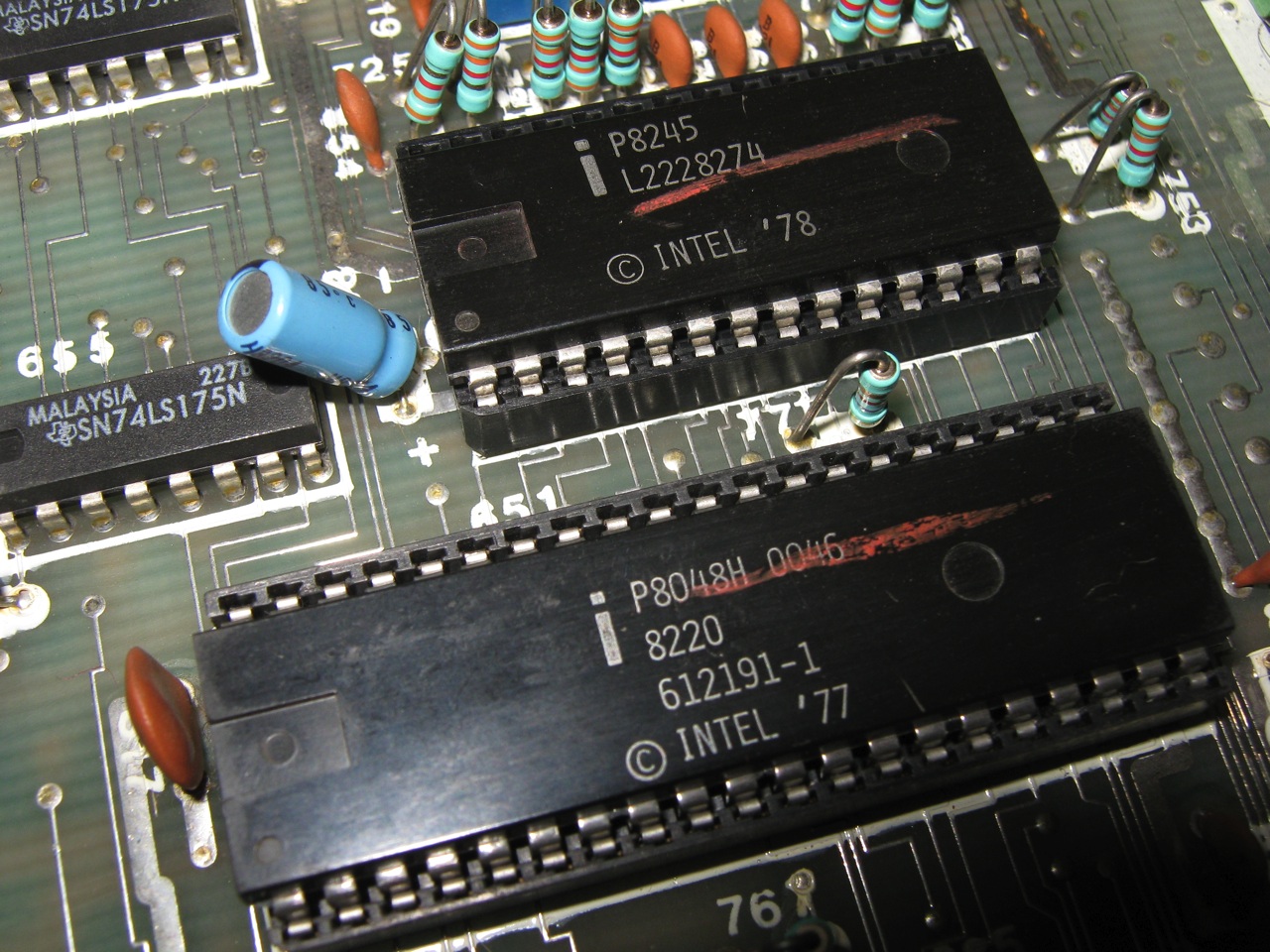
Intel chips used in Magnavox Odyssey².
This demo is no longer stored in the Museum of Computer History, moreover, it seems that it was never stored there. Ted Hoff is the only person who mentioned these talks and confirmed the existence of such a demo. Ralph Baer does not say anything about him in his book Videogames: In the Beginning, noting that the RCA processor (Baer 118) can be considered the first candidate to implement the Magnavox microprocessor system idea. The tracks break off at this small, careless mention of the demonstration in the presentation, which has much greater significance for most technology lovers. However, there is no doubt that this was the first concept of a commercial video game, which reached the stage of creating software, and I would very much like to know more about it.
RCA
The honor of creating the first documented microprocessor-controlled game (or rather, dozens of such games) must be given to RCA. RCA video game lovers are primarily known for releasing RCA Studio II , but this system used legacy equipment, rooted in the creation of the first RCA microprocessor in 1970. I will tell you more about this in other articles, but I will mention that Joseph Weisbeker led the creation of the RCA 1801 microprocessor, and also developed computer logic games separately . Therefore, he wanted to have games (Weisbecker 1-2) on his FRED (Flexible Recreational and Eductional Device) computer system.
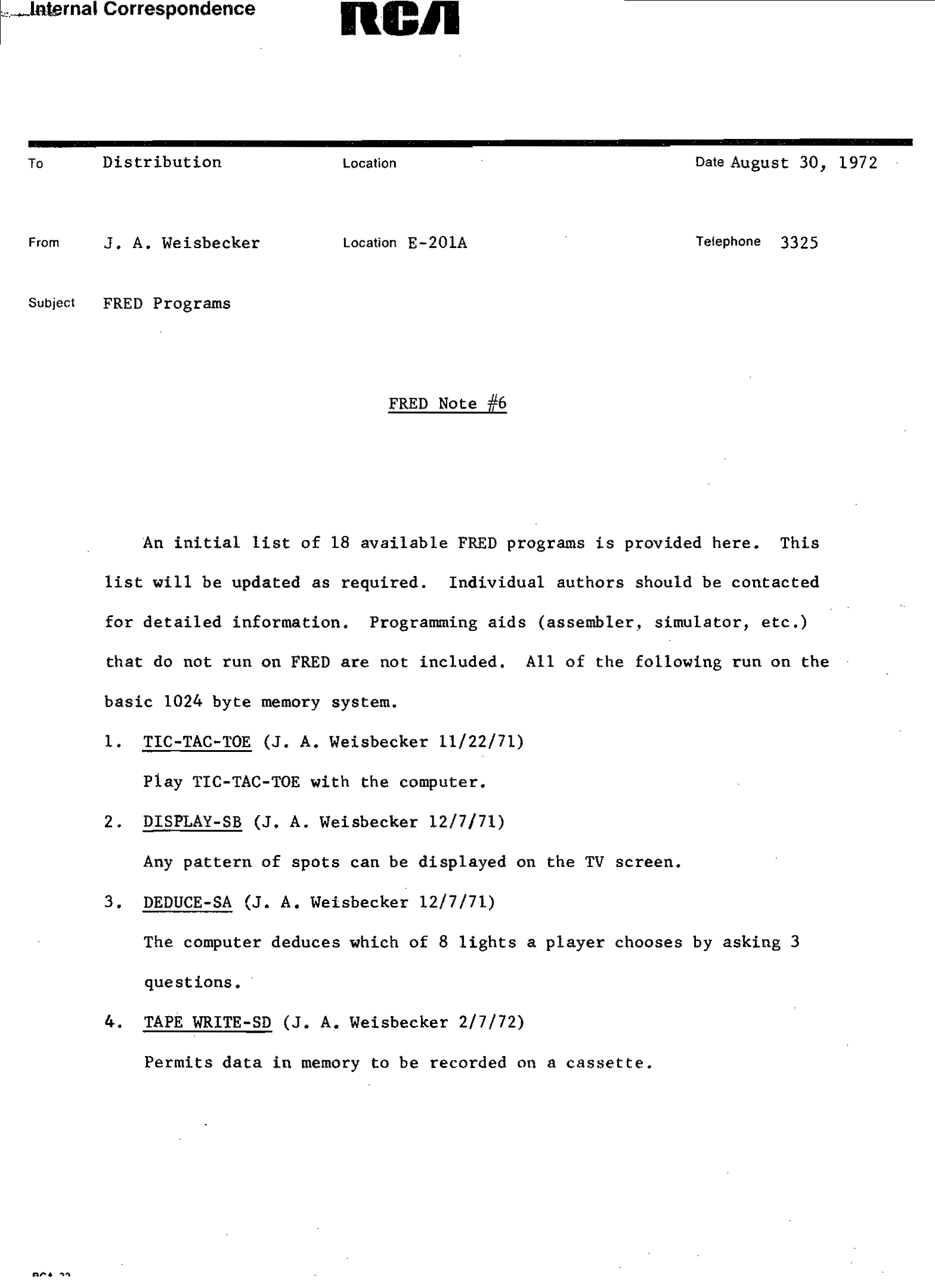


The very first game mentioned in the Weisbecker notes was tic-tac-toe, written by him on November 22, 1971 and called Tic-Tac-Toe. It was before he had a display, so maybe you should not call it a video game. But just a few weeks later, he figured out this, and on April 8, 1972, he created a game by Him called “BINIM”, which used binary notation for the classic board game. Its variation called “Erase” appeared on May 19th. At that time, he was already able to convince fellow engineers to help him write programs (not that it was very difficult to do) (Weisbecker pg 113-114; Hagley Museum and Library).

Schematic illustration of a light gun for the computer Weissbeker FRED.
The first of these was Paul Rousseau, who created the game of checkers on June 7. After that, on July 22, the Space War developer C-Too Wu game was completed (it had nothing to do with the mainframe game, it was a duel game with fixed motion. By August 1972, Weisbeker and the team created 18 programs and half of them were games (Weisbecker pg 114-115. However, Weisbeker did not limit his imagination. In May 1973, he created an Odyssey-inspired prototype light gun, trying to expand the system’s capabilities before it reached the full-scale production stage (Weisbecker pg 143-144; Hagley Museum and Library) .
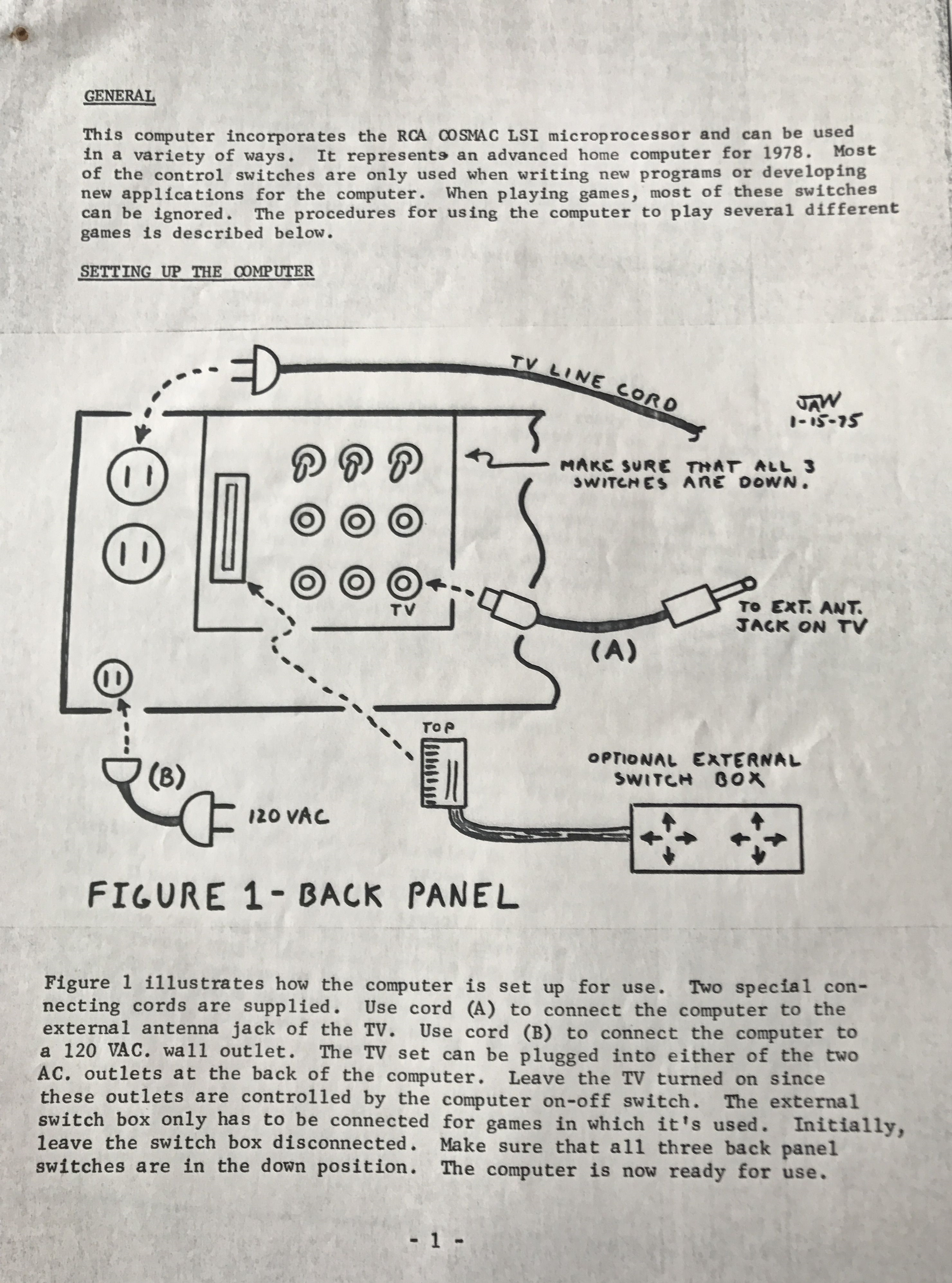
The second page of the home gaming system project.
After the release of the COSMAC 1801 microprocessor in RCA, two game projects were under development. One of them was an arcade machine (about which I tell in a separate series of articles), and the other is a home gaming system for connecting to televisions. The records for January 1975 show the diagrams of the device, as well as the eight games already created. Jackpot, Space War, Match Game, Acey-Duecy, Spot Speedway, Deduce, Life and the combined Bowl / Tag Game. The first program on this list was created by Weisbecker Joyce's daughter . She was not an employee of RCA, and therefore she can be considered her first independent (indie) game programmer (Hagley Museum and Library).

The scheme of the game Battleplan, the date is not specified.
RCA made many mistakes trying to capitalize on this pre-created library of games, but the games themselves were limited by the system’s capabilities. RCA device rendering procedures could not create smooth motion without flickering due to the fact that the system relied too heavily on the CPU. The company also failed to quickly release the system to defeat the competitors in the novelty (Hagley Museum and Library). We should applaud the developers for creating these (almost certainly) first full-scale video games for the microprocessor, as well as for the project and the history of Weissbeker, who kept these documents, which were later archived by the Hagley Museum in Delaware.
Atari
Atari was located in Silicon Valley rather close to Intel, so it is not surprising that it began to consider early microprocessor applications. More specifically, their research and development department, Cyan Engineering, studied this possibility back in 1973. The most famous of the company's experiments was the pinball prototype Delta Queen . In the middle of 1974, the company was actively testing a pinball machine with a microprocessor in the field, but it encountered too many problems in its work, and stopped the development of the project. However, few people know that this was the third step in the process of their research of technology, made at the time of the creation of the first successful Atari products.

Intel’s February 1974 Systems Engineering Today ad, representing Color Gotcha.
The first evidence of Cyan's experiments was a publication from Systems Engineering Today in February 1974. An Intel article demonstrates examples of using Intel OEMs for “microcomputers” with the title “From electronic games to hematology analyzers”. It presents an image of a rare Color Gotcha machine with a small annotation about how a microprocessor installed allows players to win occasionally. Above in advertising as a possible use of the device also referred to pinball machines.

Color Gotcha board. (Source: Ed Fries )
There is no microprocessor in Gotcha, and she didn’t seem to think about it as the first game with a computer opponent. Cyan Engineering completed the bulk of the game’s development, but by February 1974 he had just received the first Intel development kit. Publishing to Systems Engineering Today could be a marketing look at what Nolan Bushnell intended rather than a reality. Creating even a primitive AI for a quick game like Gotcha would be a huge step forward, and it would be too expensive for an already not very popular game.
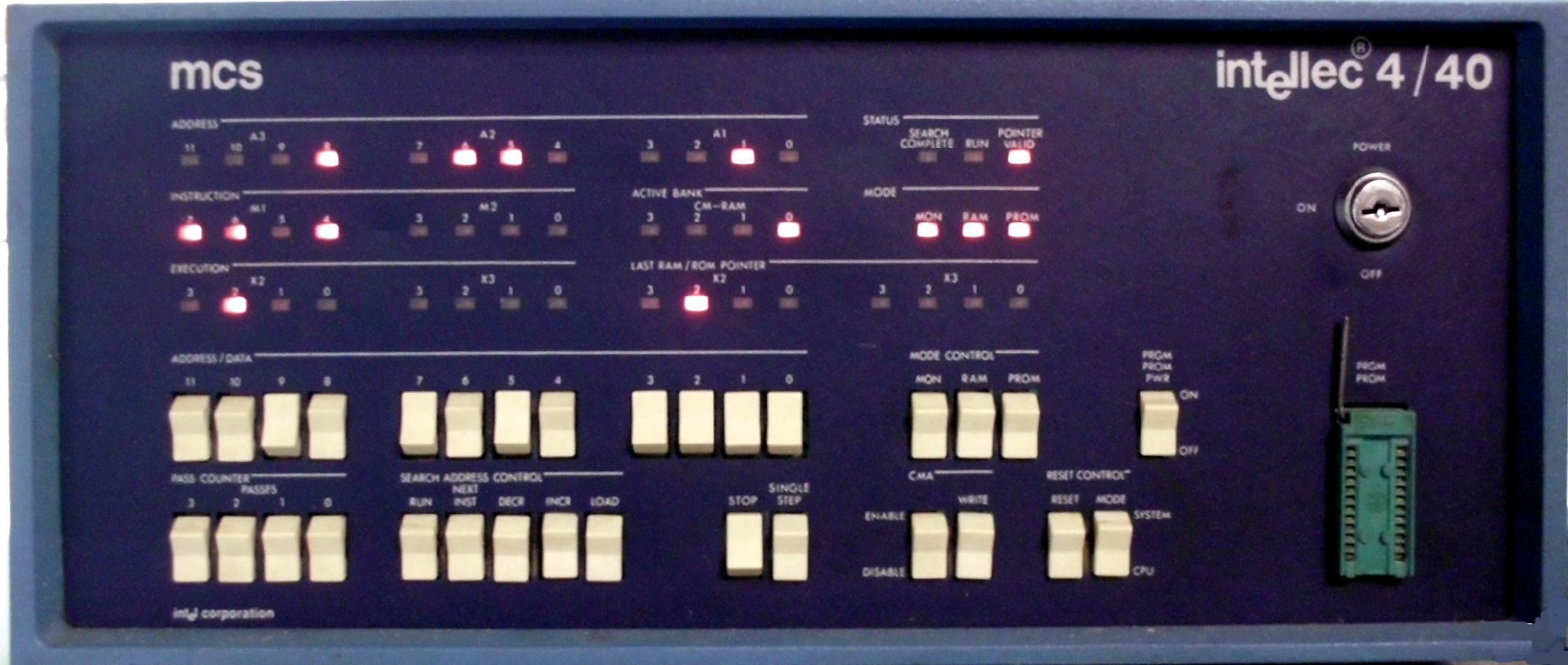
Intellec 4 development kit for the microprocessor 4004.
However, Mayer and Larry Emmons were interested in using the microprocessor as an interface for game controllers, so they wanted to create some kind of hardware system to test the potential of this component. The first experiment realized was a pinball machine, but it was not the Delta Queen. Instead, they connected the Intellec 4 development kit for the MCS-4 processor series to the El Toro model.Bally's. An engineer named Gregory Cox was instructed to create in his first microprocessor software project for this system (Cox 1981/09/11 pg 45-46). It was more like a test bench, because the development system was connected directly to the pinball machine, but it was probably the first of its kind (Cox 1981/09/18 pg 95-96). The main problem was the electrical noise, which could not be isolated sufficiently - all the first pinball games on microprocessors encountered this interference (Cox 1981/10/12 pg 10-14).
After the end of El Toro around May 1974, Cox began experimenting with the creation of a box with a LED display that could play small games like blackjack and craps. In a sense, it was the first portable gaming display, but four games made by him echoed the fate of the El Toro electronic pinball - they never got outside of the Cyan Engineering laboratory (Cox 1981/09/18 pg 94-96).
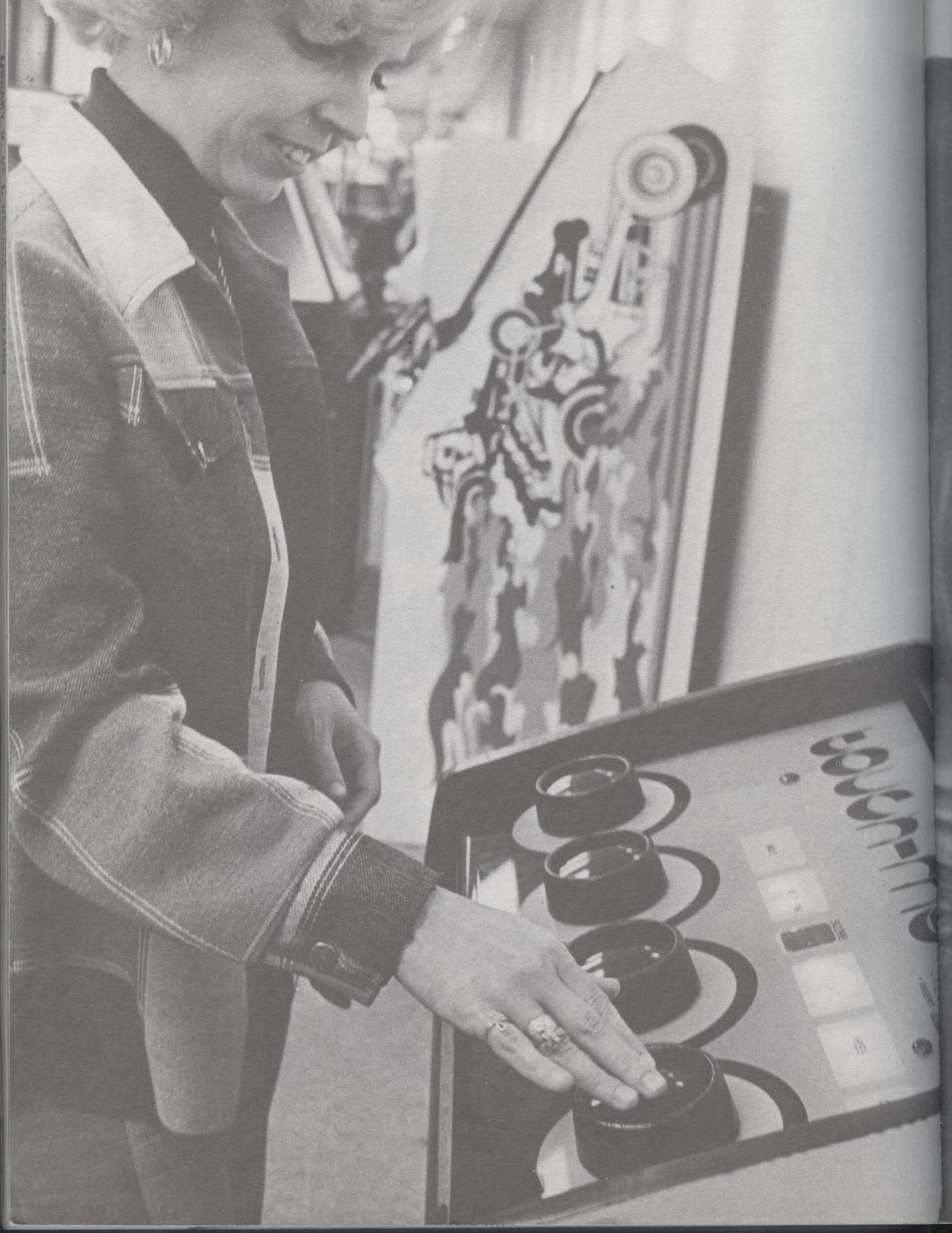
Electromechanical arcade machine Atari Touch Me.
At about the same time, Cyan began experimenting with two other video game projects. Cox created a first-person fly-through game (probably called “1st Person”) that used a joystick. However, before his departure, she was never created due to the financial difficulties of Atari and Cyan (Cox 1981/09/18 pg 107-108). The second was a project called “Frenzy”, which was specially developed for the Kee Games. Steve Bristow described this game as “a toy about hitting buttons” (Bristow 1981-08-05 pg 58). It was probably also called the “Reaction tester,” which implies some kind of pressure control testing. Both games are mentioned in the project records of April 11, 1974, created by Steve Meier (Deposition Notice pg6). Also in the records mentioned Touch Me,
The developers of Cyan felt that they were capable of more than El Toro, so immediately after completing the work on the pinball, they began to work for Bally Delta Queen around June 1974. They quickly reworked their raw materials into a product that could be demonstrated at the MOA in November of the same year (Bristow 1981-08-05 pg 51-52). Bristow recalls that they had to disassemble the El Toro machine in order to make the Delta Queen work (Bristow 1981-08-05 pg 15, 75). Five devices were created, privately shown at the exhibition to assess the potential interest of buyers (Reissue Examination pg 6-7).
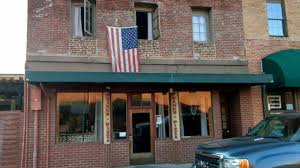
Frank's Pizza Parlor in Grass Valley, California.
It did not seem that Delta Queen would cause a strong interest of buyers, so at the end of the year they decided to check its play value at the local eatery Frank's Pizza Parlor. The problems faced by El Toro again surfaced - the machine was constantly failing due to electrostatic noise. One of the main problems was that the power in the return circuit inside the machine led to interruptions that completely confused the internal logic (Schoeffler pg 52). Mayer and Emmons had to go back to the drawing board to create some kind of protection for the device, which lengthened development time (Trial Brief pg 157-158). They showed the game again in April 1975, oddly enough, at a conference in Asilomar devoted to DNA research (Reissue Examination pg 7).

The first pinball machine Atari called The Atarians.
However, the problems were not solved, and Cyan made the last attempt to create a semiconductor pinball. Meier bought a Williams pinball machine from the Super Flite of Williams and wanted to modify it so that he could play four of them (interestingly, this car already had a model for four players ). He connected the old system on the processor 4004 to the machine and closer to the end of 1975 he sent it to Atari production engineers for evaluation. The machine was still impossible to get to work, and it was very moody. This design was abandoned once and for all, freeing the way for the pinball machine The Atarians, which was created in 1977 (Trial Brief pg 158; Schoeffler pg 54-56).

David Shepperd's television game, created at his home.
All these microprocessor experiments made Atari realize that after the transition to the company's processors, people who could work with software would be needed. The first such person was Tom Hogg, the second - David Shepperd (Smith). Shepperd has long been interested in video games, and as a lover of technology from Silicon Valley, he vigorously watched new technologies. He was one of the very first buyers of the Altair 8080 computer, the release of which began in 1975, and set about trying to transform his expensive fun into a video game (Shepperd).
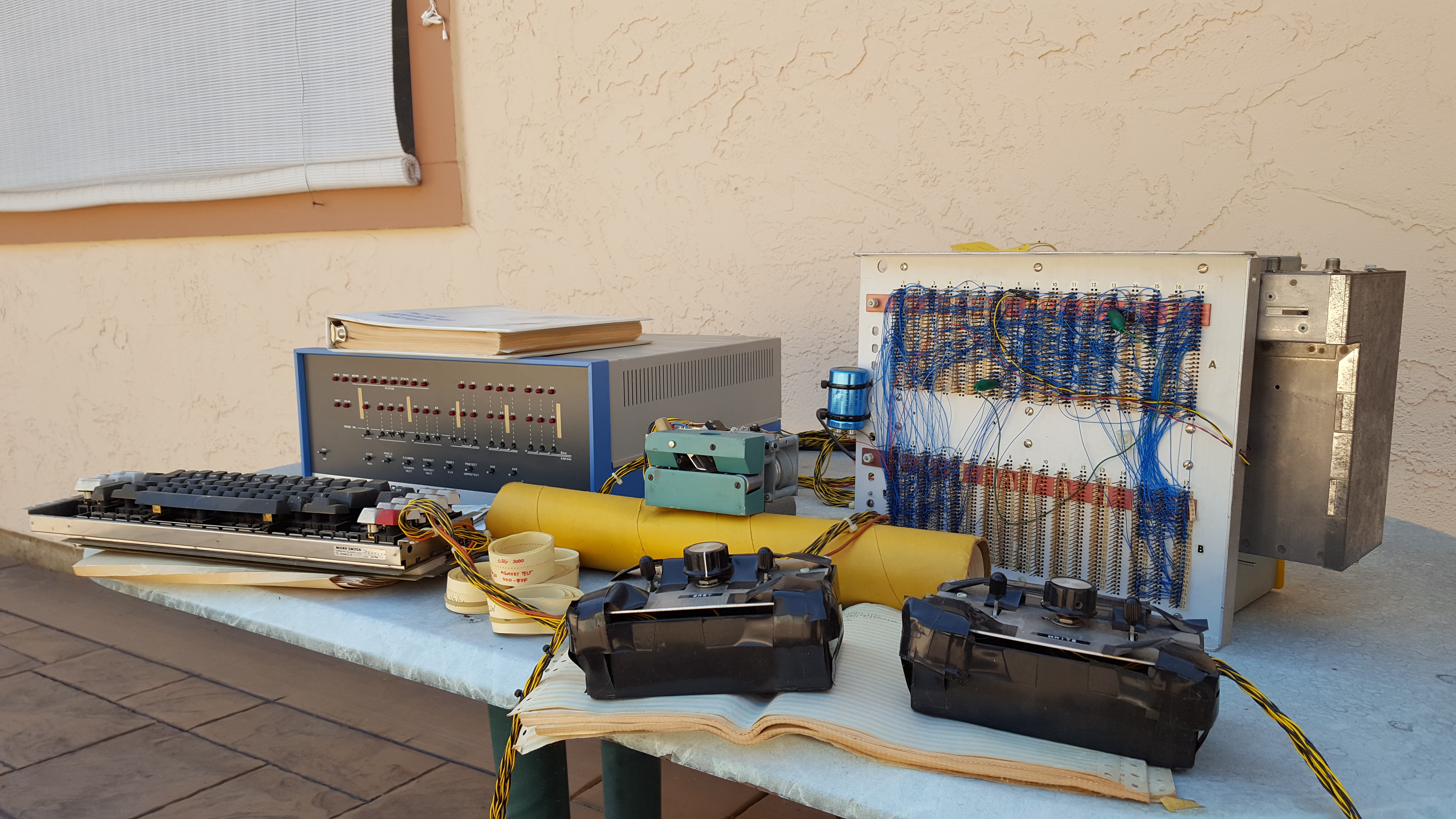
All components of the Shepperd game, including Altair.
The game he created for two people vaguely resembled Pong, but was not his clone. He could not remember what its meaning was. However, in reality this game was not controlled by a microcomputer. The main part of the video processing was performed by about a dozen transistor boards, and the Altair computer simply asked the registers when starting the game, but be that as it may, a microprocessor was used in this game. At the time of the interview in Atari at the end of 1975, he was advised not to talk about this project for legal reasons, but he got this job probably because he was one of several people in the world who had experience in creating a microprocessor game. Shepperd kept this equipment for a long time until he transferred it to the Strong Game Museum in Rochester, New York (Shepperd).

The first Atari video game based on a microprocessor, written by Tom Hogg.
The reasons for the slow transition to microprocessor technology in Atari was the desire to do everything right, and the simple lack of experience. The company had the most difficult development system for the first programmers when compared to all other manufacturers of arcade machines that had a real mainframe to work with. The first mistakes gave the company's mechanical engineers to gain experience, and the programmers made it possible to realize the scale of the equipment's capabilities. Of course, it was at this time that they took steps to the home market with a processor 6502, smoothly moving on to the next candidate.
Allied Leisure
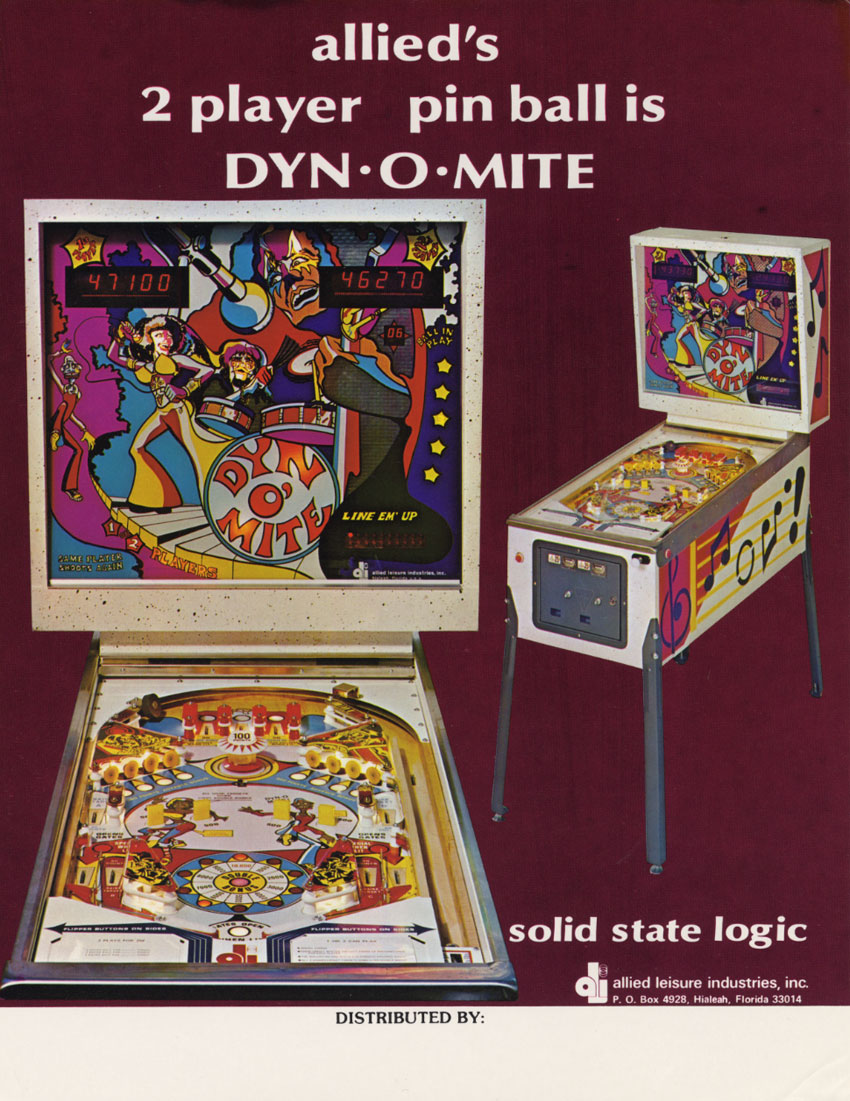
The Allied Leisure Transistor Dyn O 'Mite without a microprocessor produced a rather big commotion.
Located in Hialea (Florida), Allied Leisure has always ambitiously sought to explore new frontiers, but it lacked the stability in production to create a truly outstanding product. Even before the era of microprocessors, they assembled a transistor pinball machine, which was later called Dyn O 'Mite , in honor of the memorable phrase from the TV series Good Times (Smith). It was a striking step forward, attracting the interest of many people, but around the same time, the company also worked on a microprocessor pinball (Play Meter 1975/06).

Stylish Chuck Peddle.
This machine was created for the company by Chuck Peddle himself, who was behind the development of MOS 6502. Peddle came to Allied Leisure to try to sell it to 6502 and offered to build a pinball machine to demonstrate the advantages of the processor over their transistors. Peddle’s main idea in this project was to demonstrate the capabilities of the 6502, and especially I / O ports, but it’s also likely that Allied was interested in checking which of the two transistor projects would be more viable. Although the 6502 was cheaper than other microprocessors on the market, in 1975 its merits still needed to be proved. Each company offered its own chips, but before Peddle no one offered technical support (Bagnall pg 40-41).
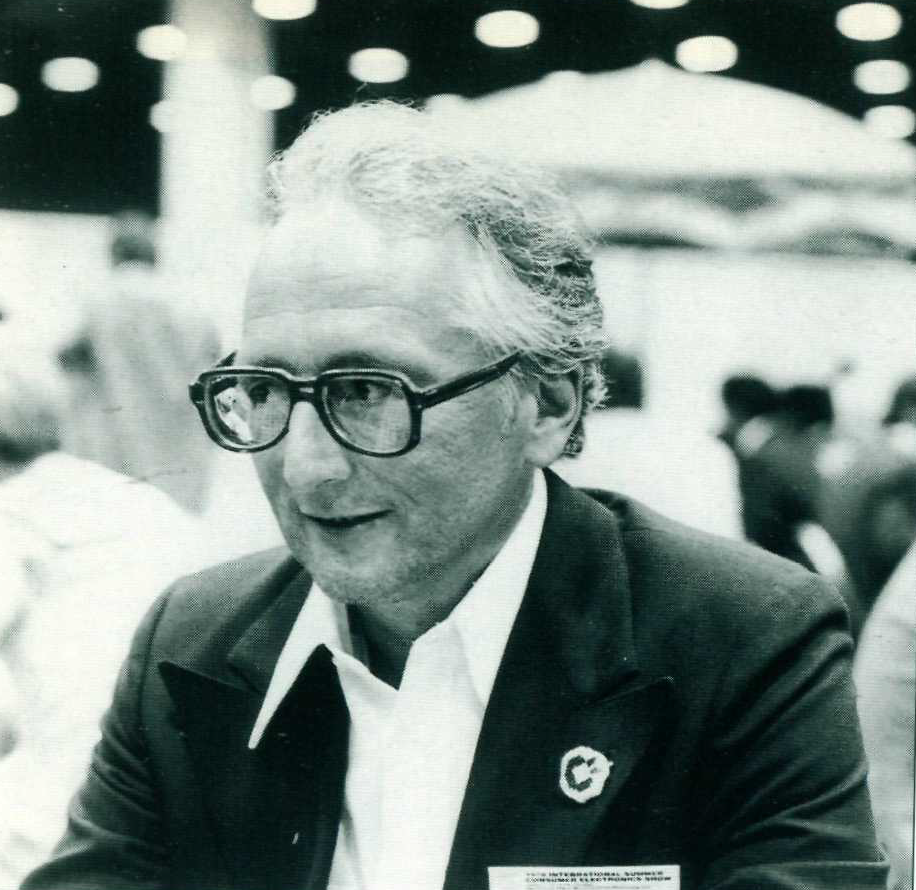
Chuck Peddle in 1978.
In Florida, Peddle spent about a month writing a program for a pinball machine, which the company's engineers helped him assemble. Bagnell reports that he demonstrated the machine at the National Computer Conference, allegedly in May 1975, just a couple of months after Dyn O 'Mite appeared at distributors of automatic machines (Bagnall pg 45). It is not very clear why Allied did not continue the development of this design. Peddle didn’t ask much about the difficulties that many first device builders encountered, but he didn’t talk about the failures of his inventions in other sources either. It probably happened because 6502 was a better CPU than 4004 and there were not so many difficulties in its work, but it seems to me doubtful that Peddle would create something close to the ready for production version of the machine.
Ramtek
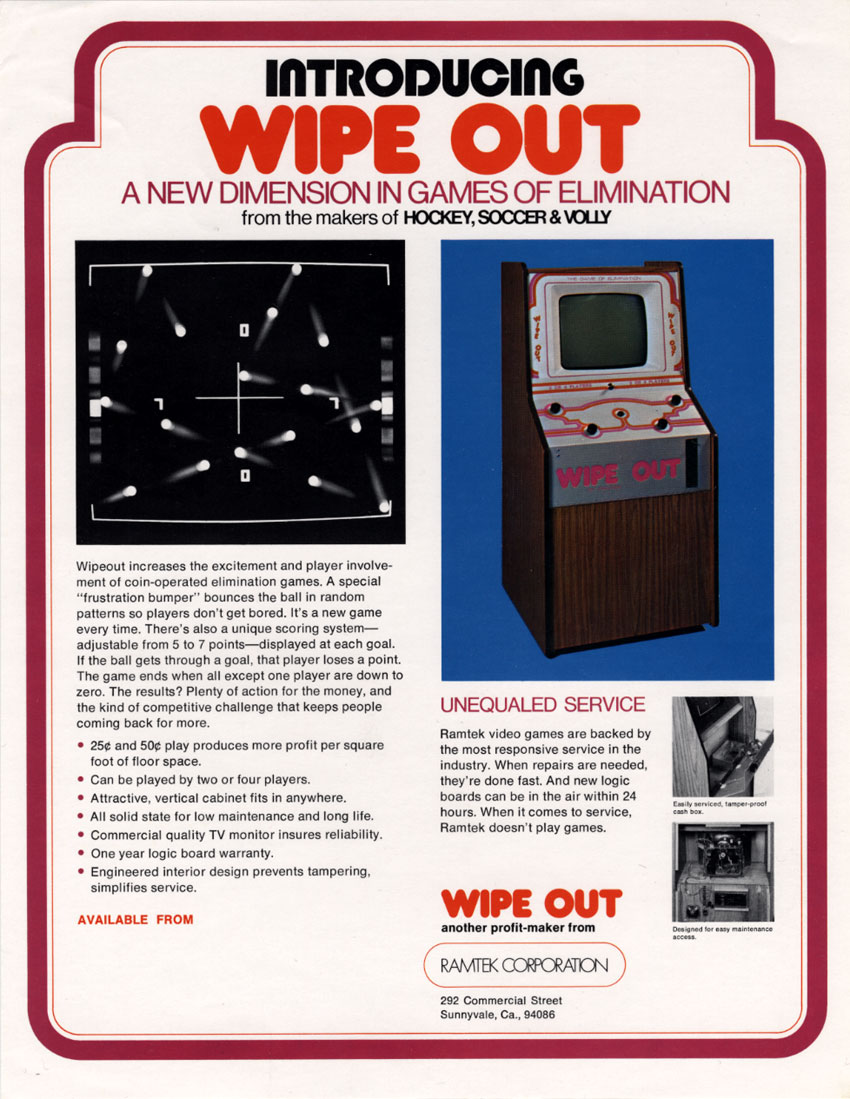
The Wipe Out game released by Ramtek in 1974.
Ramtek was a very suitable candidate for the use of microprocessors. She was involved in monitors (this industry was one of the first to switch to full board support), and the company's headquarters was only a mile from the main Intel building (McEwan pg11). Charles Macavan decided that by the end of 1973, Ramtek would come to the pinball machine market, so he hired the experienced pinball developer from Williams Electronics, Bob Jonesy (McEwan pg 12-13). A team from Howell Ivey, Tom Adams, Roy Nesi, Ken Ecgard and a consultant named Roy Holt ( whothat he invented a microprocessor earlier than Intel) to develop from scratch a Lucky Dice pinball machine based on the 4004 processor, which was supposed to be released in September 1974 (McEwan pg19; Schoeffler pg 64-65).
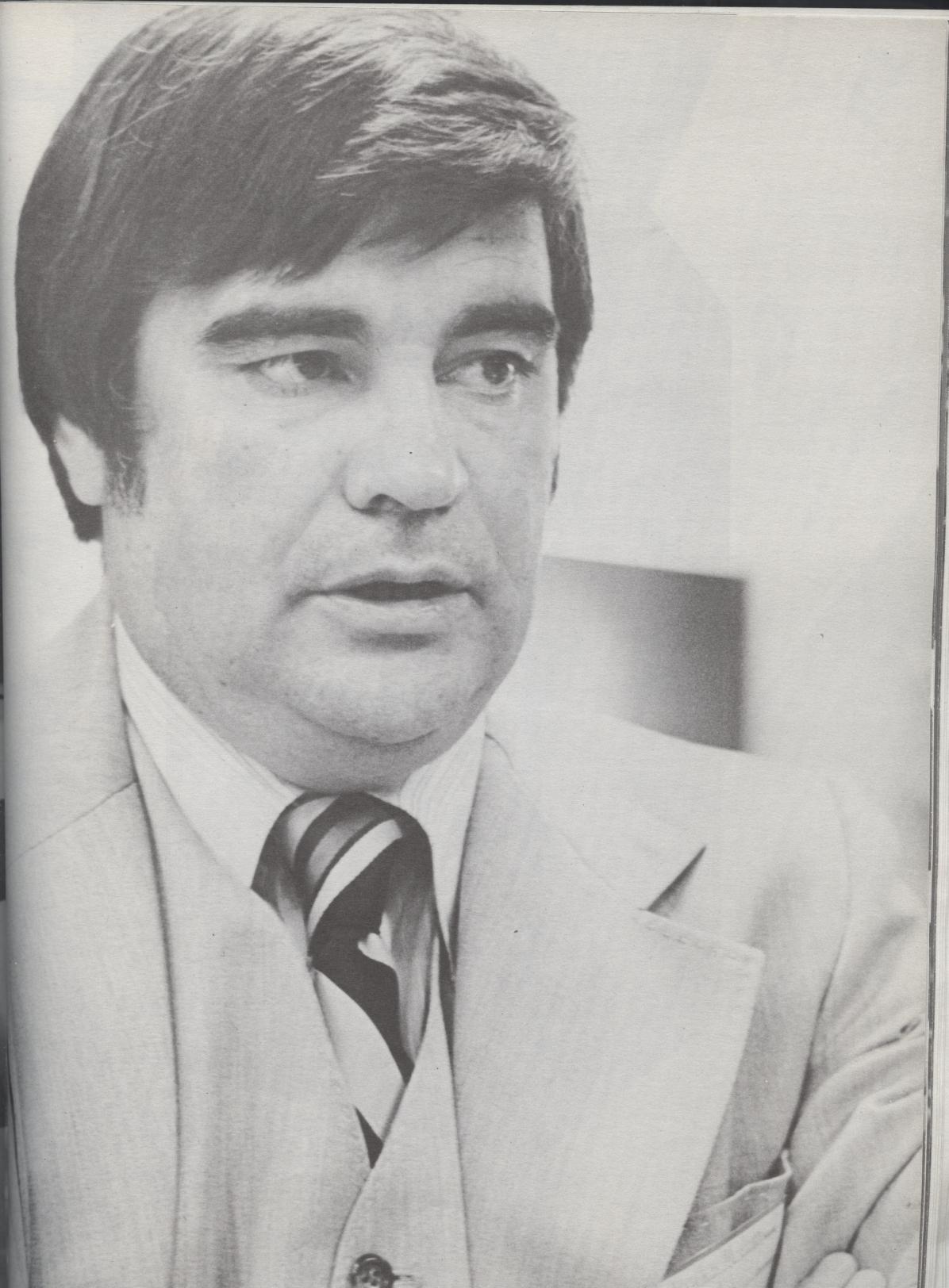
Charles Macavan, President and Co-Founder of Ramtek.
Unlike many other experiments conducted at that time, after a short time, engineers were able to achieve sustainability of Lucky Dice. They disconnected the machine from the main development computer, after which it worked independently, which reduced the need for multiple development kits (McEwan pg18). In total, three such devices were created in different colors. They were tested at Ramtek around May 1975 (McEwan pg20-21).

Ramtek's Horoscope department demonstrates its own microprocessor hardware.
However, the fate of Lucky Dice was not very successful. According to those who worked with the machine, it was turned on only to show that current flows through it. Points were displayed incorrectly, the backlight was turned off randomly, and the machine did not fix the slopes. Despite all this, the company attempted to show it in October 1975 at the MOA show. However, he did not receive a positive reception, and Ramtek at that time did not earn so much money to finance full-scale production, so the machine is a thing of the past. The following year, the company was already working on a video game microprocessor system, perhaps the first of its kind (McEwan pg 25, 29-30, 48-51; Kayton 57-58; Electronic Engineering Times pg 153-154).
Major Manufacturing / Manufacturers
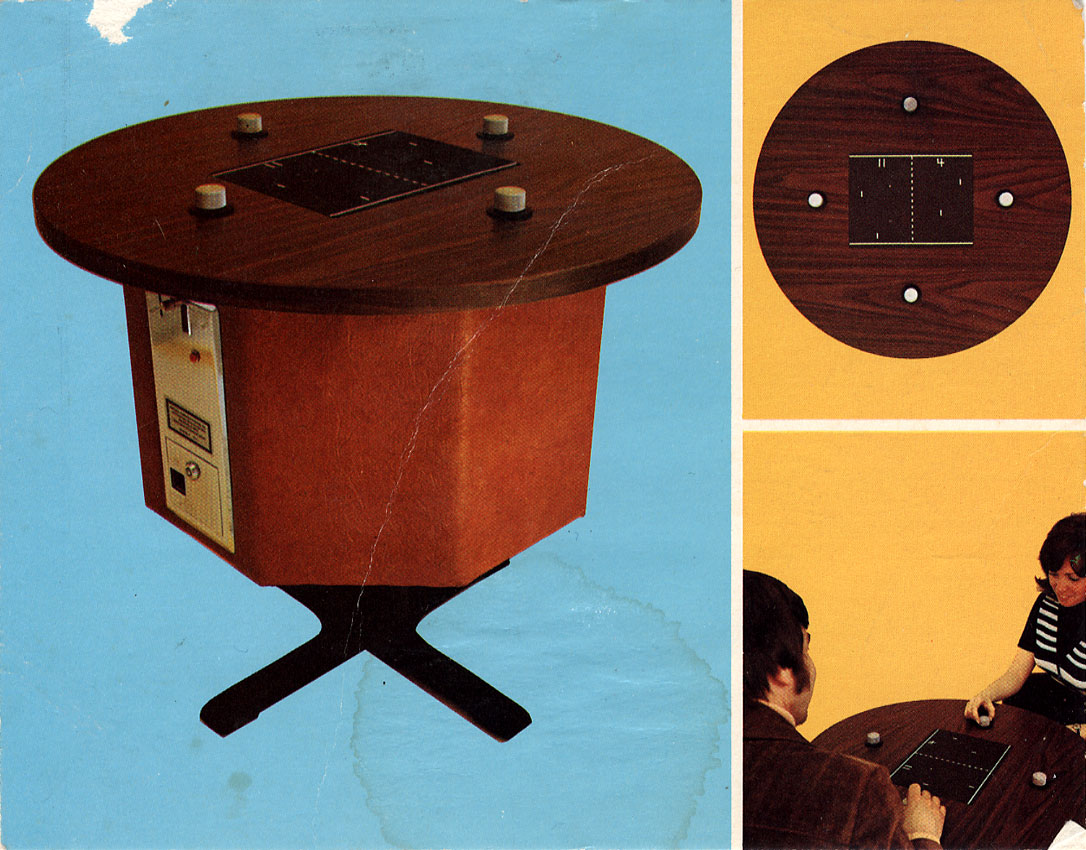
The main product of Major Manufacturing called Fascination.
Information about the Major Manufacturing company from San Mateo is almost unknown today. It is clear that it was founded around 1974 and created two machines in the “cocktail table” format: a clone of Pong called Fascination and Lunar Module. However, on the MOA show in 1975, it was mentioned as selling three arcade games that used a microprocessor (Vending Times 1975/10 pg 80).
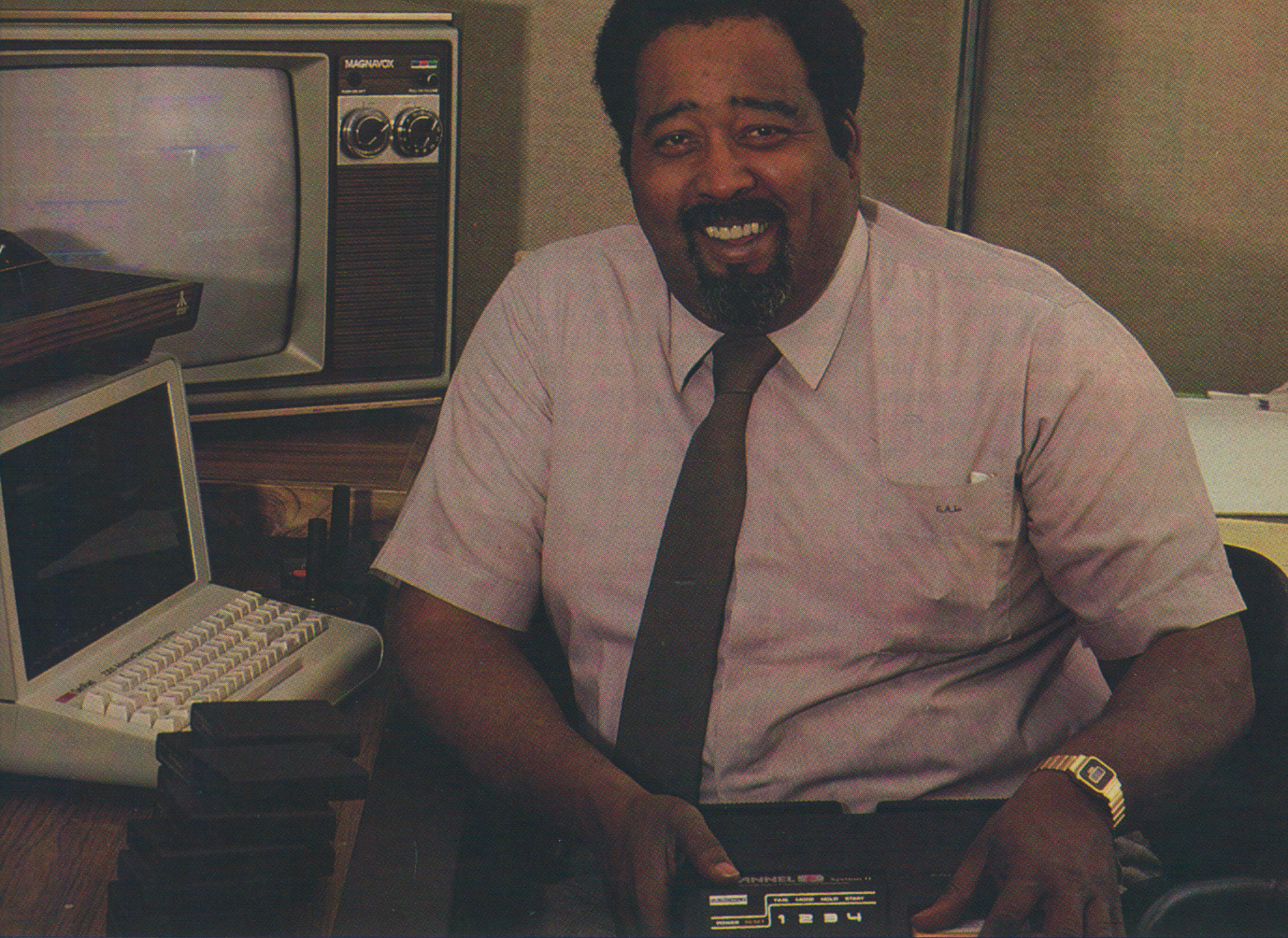
Fairchild Engineer Jerry Lawson.
One of the products that were named was Demolition Derby at the time, although it was not explicitly stated that it was based on a microprocessor (this is especially confusing because there was another Chicol Coin game Demolition Derby on the same show ). This product was the work of Fairchild engineer Jerry Lawson. Lawson, a longtime game lover and computer programmer, used the Fairchild F-8 to create games in his spare time, and he also managed the project (Smith).

Major Manufacturing Flyer about another game that reached the production stage.
Lawson never talked about the gaming process of the machine, but the description of the game states that it is “Destructive derby in which the wings“ fall off ”from the cars” (Vending Times 1975/10 pg 95). He sold this game to Major Manufacturers, the company tested one pizza machine, but, according to Lawson, he never went into production. Lawson wanted to sell the game to another coin machine company, but by that time Fairchild employees had already learned about his experiment, and therefore attracted him to the project, which would later become Fairchild Channel F (Smith).
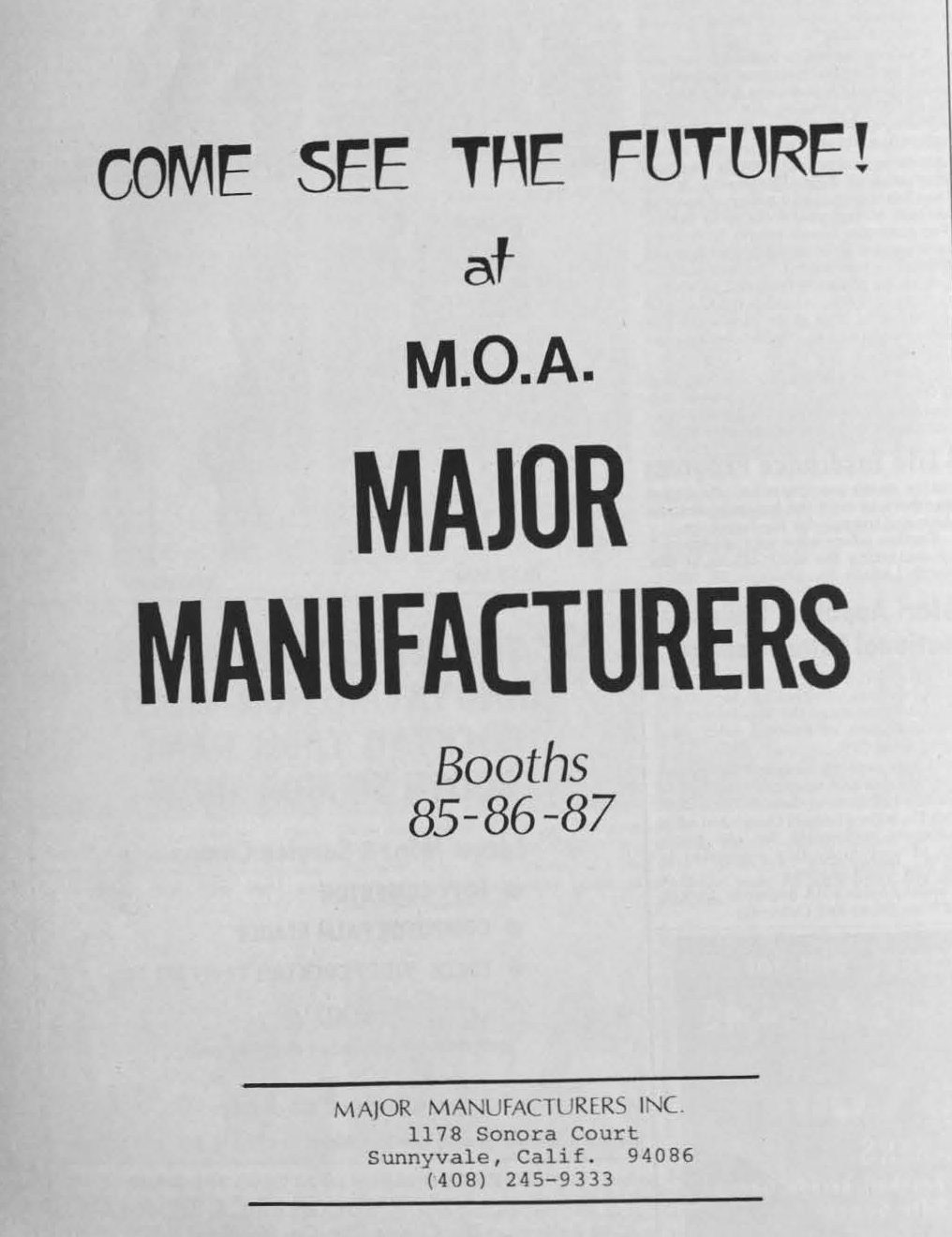
It seems that Major Manufacturing and Major Manufacturers are one and the same company, despite the difference in addresses.
But Major Manufacturers at least tried to interest distributors in the product. According to President Bill Kinsel, other games were developed by an internal team, but mentioned that 25% was taken from third-party creators. It is not known how the company received these games, but at least one of the microprocessor games was football. But again, it is unclear whether it was a type of Pong or not (Vending Times 1975/10 pg 95). Chuck Arnold, who led the commercial department of Major Manufacturers just a month before the MOA show, absolutely nothing about the products on display. The experience of Major Manufacturers was not very pleasant for him, and he only recalls the constant sales of the “cocktail table” Fascination (Arnold).
Innovative Coin Corporation
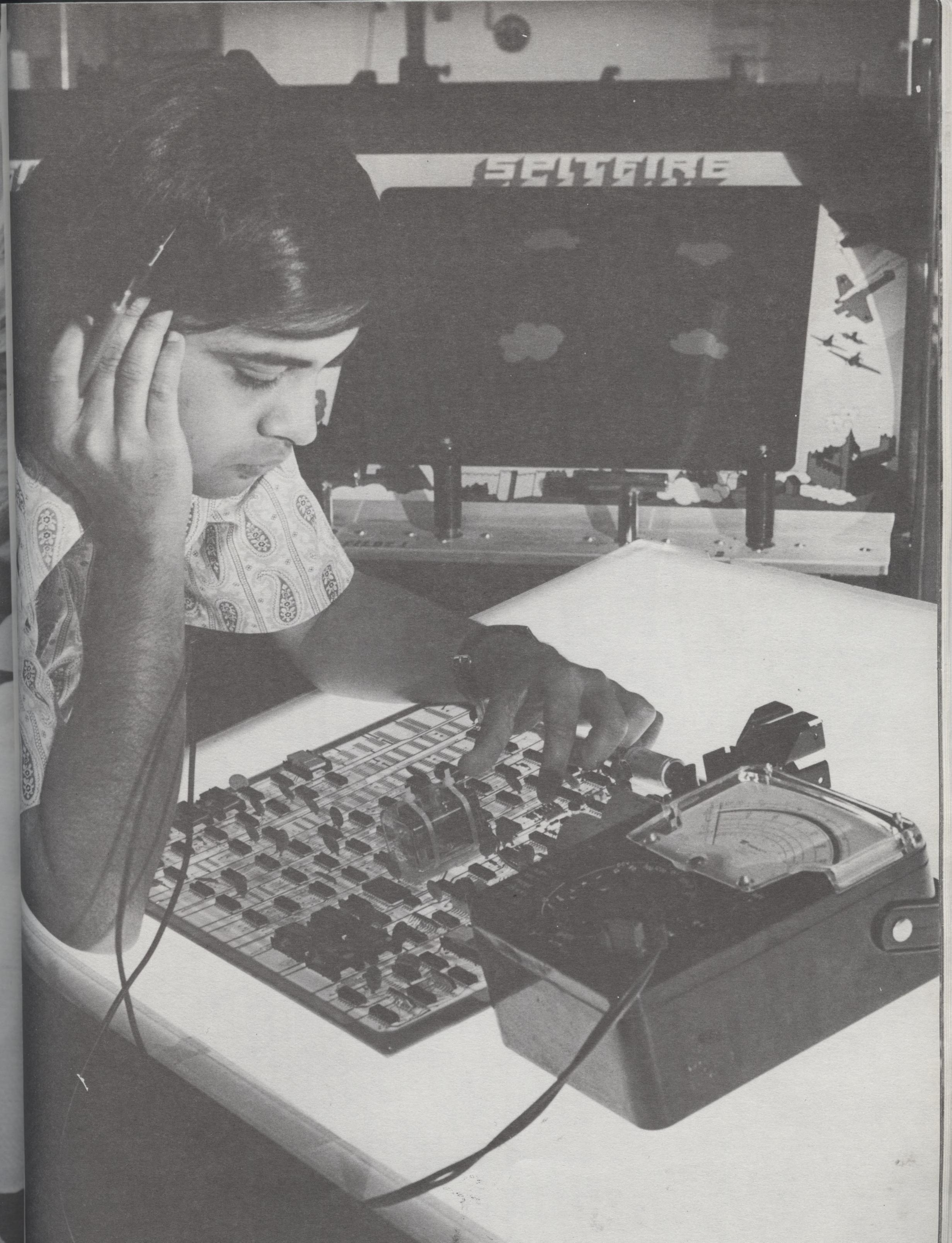
Engineer analyzing the Spitfire board.
Former Atari engineer Doug Hughes left the company around the beginning of 1975 to create, with his partners Don Cera, Jerry Donaldson and Mike Glass in California, the independent manufacturer of arcade machines Wizard Kings. At that time, Hughes had connections to Fairchild and managed to get the F-8 chipset. It was probably a pre-production version, because he recalls how he found bugs in the microcode, which he helped to fix. When the team began work on a game about planes, which would later be called Spitfire, Hughes found a local partner in the person of Innovative Coin Corporation. This company was supposed to be engaged in the production of the game after the completion of its development (Hughes).
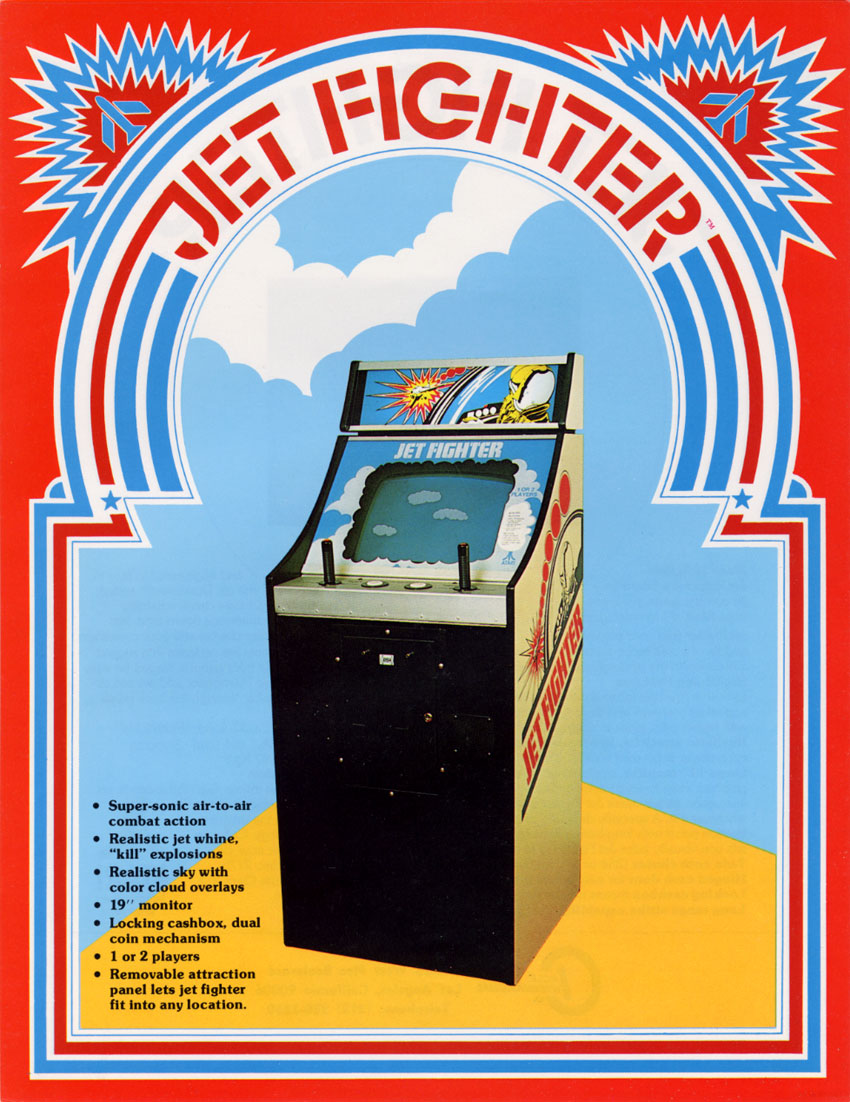
The game about the aircraft company Atari - Jet Fighter.
In terms of gameplay, Hughes's game was similar to Atari's Jet Fighter, but the internal technologies were very different. Hughes noted that Atari’s chain of motion patent used counters to determine the horizontal and vertical positioning of the screen, but Spitfire used another type of vectorization that did not violate the Atari patent, although the company’s lawyers studied this issue. Another difference from Jet Fighter was that there was a tower in the middle of the screen in Spitfire, which created a more dynamic playing area, comparable to Tank. The game was developed in the garage of Hughes and Glass as a prototype of the wires (which is still kept by Hughes). The product was transferred to the Innovative Coin Corporation at the end of 1975 (Hughes).
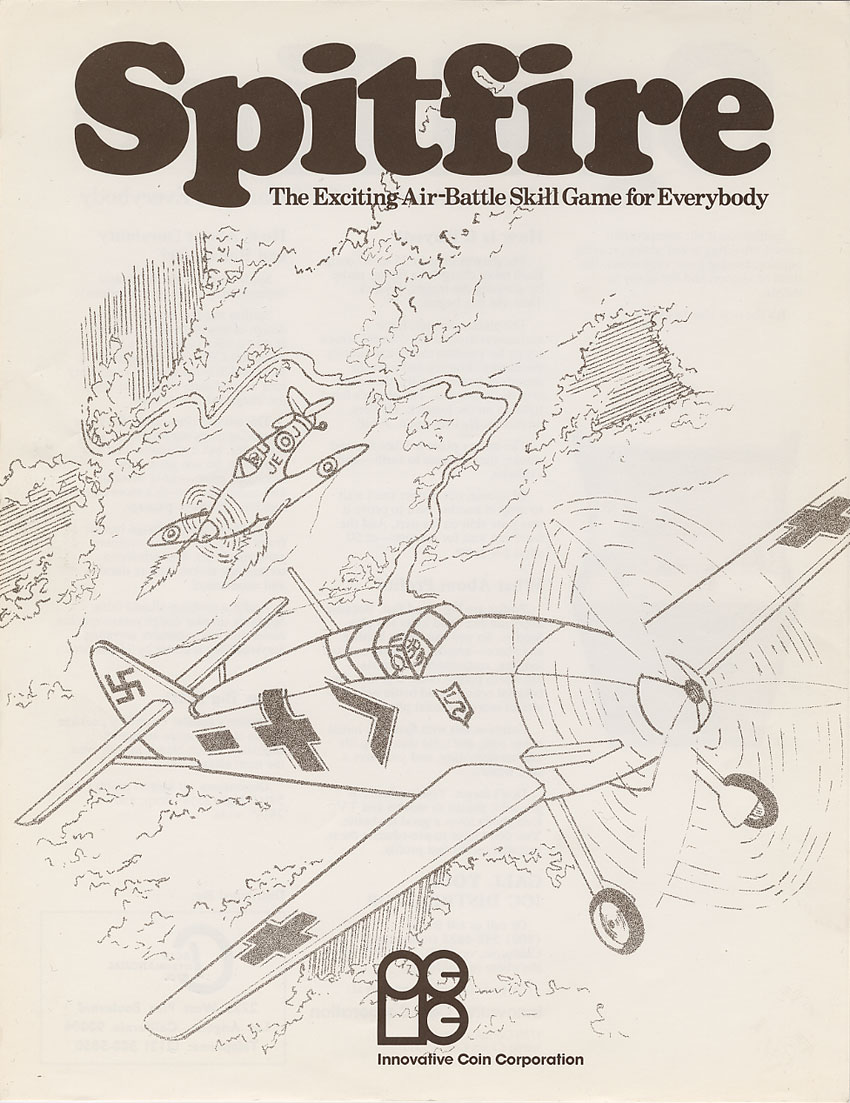
Spitfire game flyer developed by Wizard Kings.
Although Innovative Coin Corporation was supposed to release the game in January 1976, after the famous 1975 MOA show, the development competed for first place on the list with other applicants. The unprincipled company fell apart and tried to drag the Wizard Kings behind them, but Hughes was saved by Hank Ross from Midway Manufacturing (Smith). He later joined the Bally development department and worked with the Dave Nutting Associates group on microprocessor research, but this was much later than the debut (Hughes). In 1977, the game was remade by Mike Glass for the Fairchild Channel F console.
Bally / Midway
The first known entertainment device with a microprocessor was Bally Alley , this game was released in April 1974 ( Cash Box 1974/05/18 ). Although judging by the name, it was a copy of bowling from the 1940s, in practice, the machine turned out to be much less tactile. The game used light bulbs to indicate the position and trajectory of the ball, as well as highlighting the shot down skittle. Compete for a set of strikes using joysticks could up to four people (Foster pg 111-114).
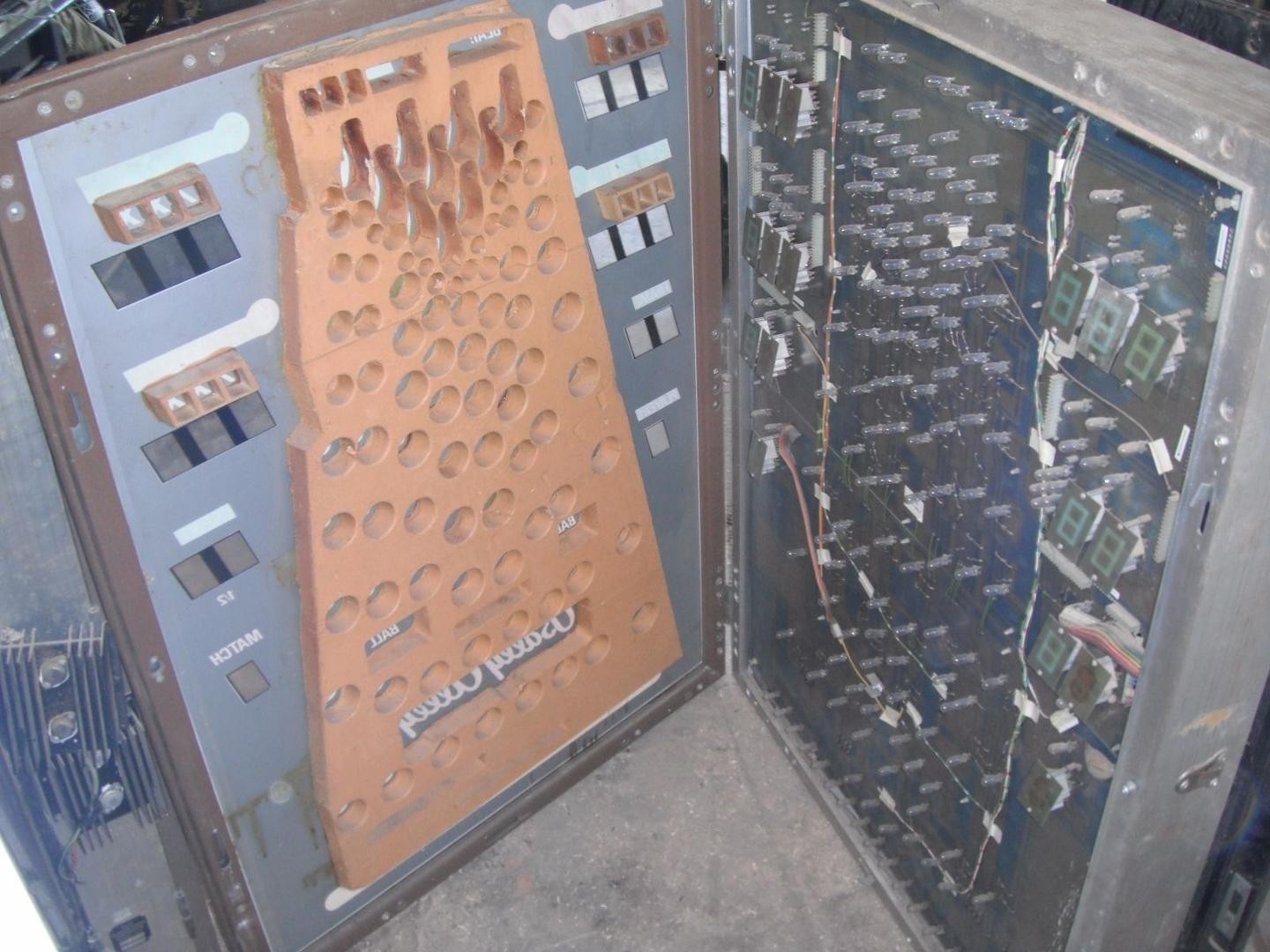
The interior of the machine Bally Alley.
The machine became an invention of the Australian contractor Colin Foster, an experienced designer of gambling gaming machines (Foster pg 6). He previously worked at Bally, and then created his own company in Illinois called Emu Electronics (no, this is not a joke), which was to become a contractor for local gaming companies (Foster pg 23). Forster designed a very compact and complex game that worked on the Intel 4004 processor, which had no particular problems with the simplest work (Foster pg 49, 58, 74). According to Lane Hok, Gremlin Industry’s Fooswall microprocessor game designer, which came out the following year, microprocessors were a huge boon to machine guns because they avoided a lot of timing problems that arose in games based on electronic circuits (Smith).
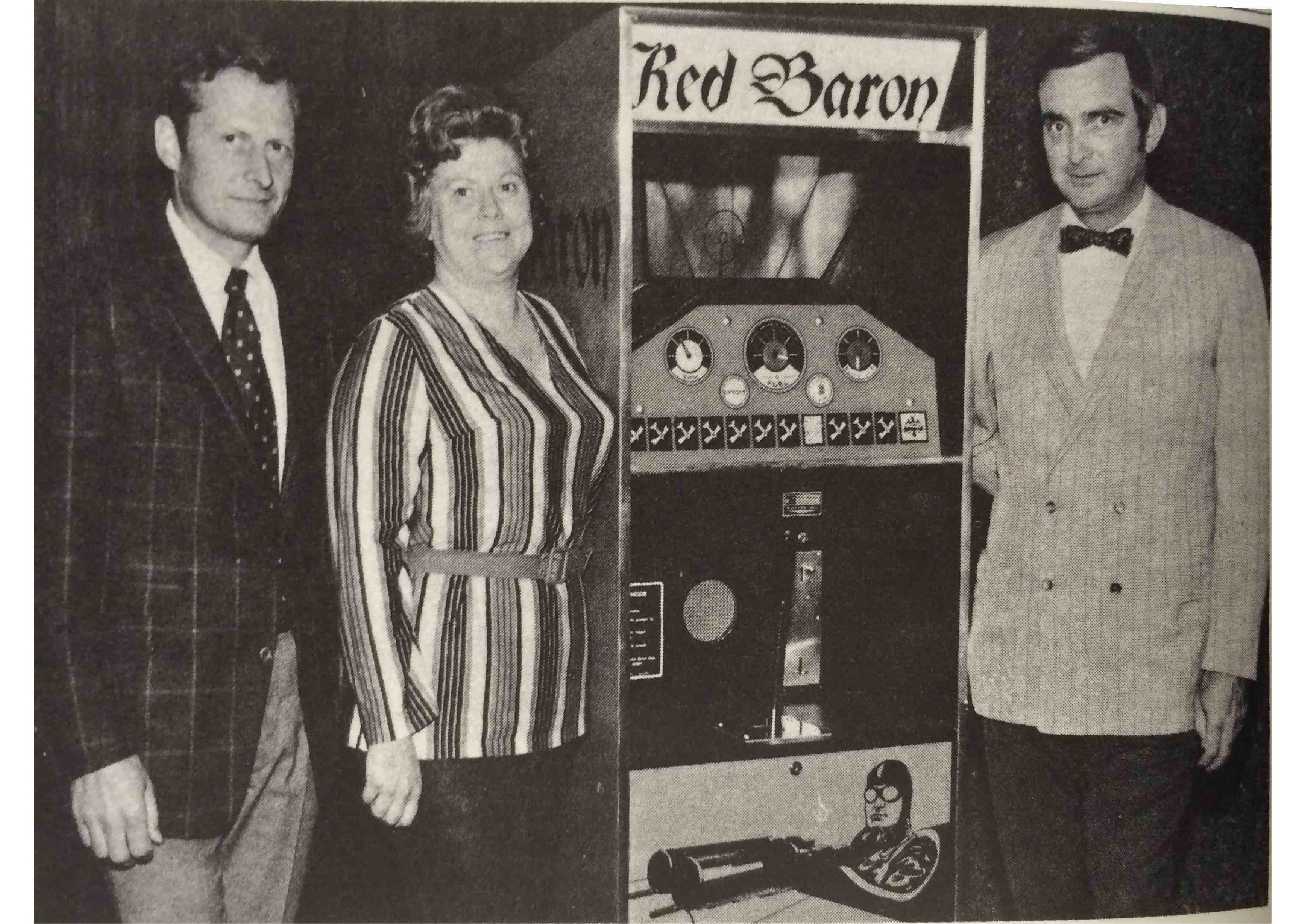
David Nutting (right) at MCI, 1971.
Bally also had several potential contractors who created new technologies, and the most important of them for the company (and for the entire industry) would be to work with David Nutting. At that time, David Nutting was in his second company called Milwaukee Coin Industry (MCI) and he no longer liked the course that drove the business. The company was increasingly leaning towards servicing arcade machines and moving away from self-production, hiring several consultants to support game concepts (Nutting 1984/01/06 pg 86-87).
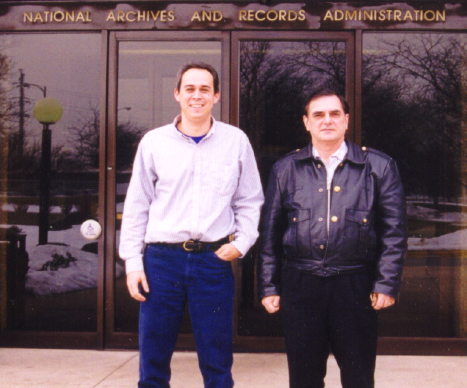
Jeff Fredriksen (right)
One of these independent consultants was local engineer Jeff Fredriksen. One of the first tasks of Fredriksen at MCI in 1973 was to assess the viability of Fairchild F8 microprocessors in a video game that MCI had not yet created at that time. Jeff found the processor inappropriate, so the company began to consider other alternatives, such as the manufacturer National Semiconductor, who wanted to sell it a large stand-alone computer board. In the end, the company entered into a contract with Intel in December 1973 and announced which chip it needed (Fredriksen 1984/01/03 pg 130-131, 134-135).
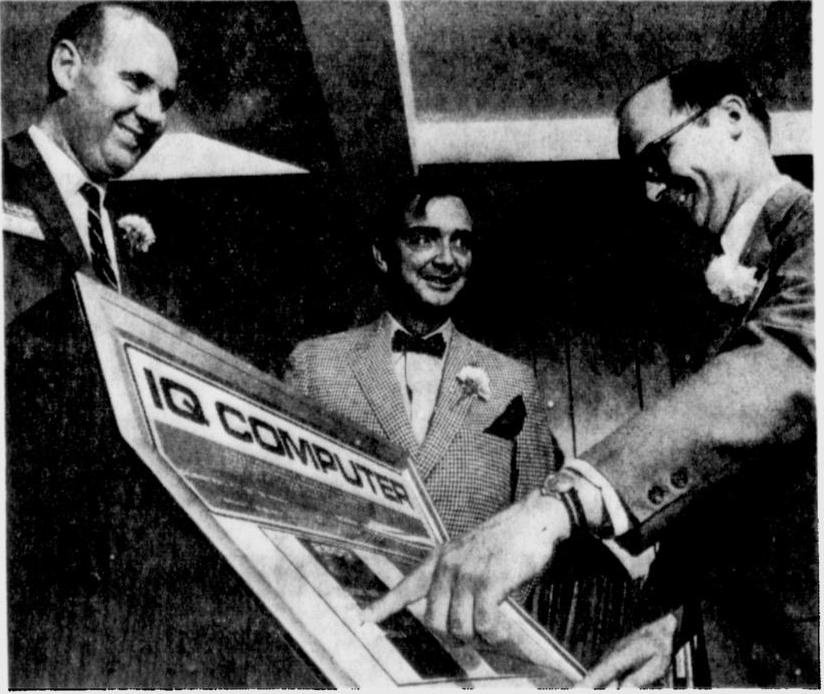
David Nutting (center) demonstrates IQ Computer in 1968.
Nutting immediately came to the idea of a pinball machine, but he was a little worried about whether a single chip could control the whole game. Fredriksen created a demonstration for him and they decided to work on a simpler and more familiar concept. Fredriksen had to first modify the game IQ Computer, which David helped create in 1966, and to assess whether the processor 4004 can control its relays and lamps. Nutting approved the purchase for about $ 3,000 of the Intellec 4 system, which was supposed to arrive in April 1974 (Fredriksen 1984/01/03 pg 151-157; Nutting 1984/01/06 pg 105-110; Fredriksen 1984/03/19 pg 123 ).
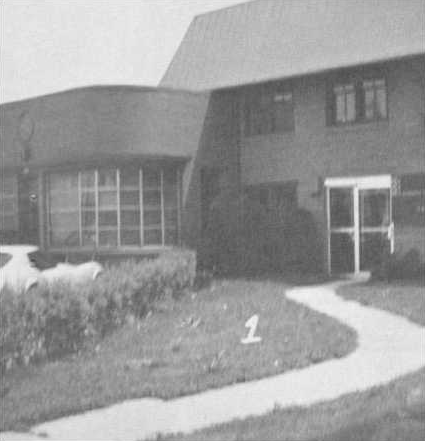
MCI / Dave Nutting Associates building in 1974.
By the time the Nutting system arrived, Fredriksen and MCI technician Duane Knudston had moved from the MCI offices to the warehouse that Nutting had acquired in anticipation of the company's division. Nutting and Knudston connected the external Intellec to the lamps and IQ Computer relays, while Fredriksen was writing a program to control the entire device. The product was called Super IQ, and it worked, but the authors did not plan to test it on users. They took the first step, and now it is time to move on to what exactly could be sold (Fredriksen 1984/01/03 pg 148-157, 167-171, 178-179; Nutting 1984/01/06 pg 111-112).
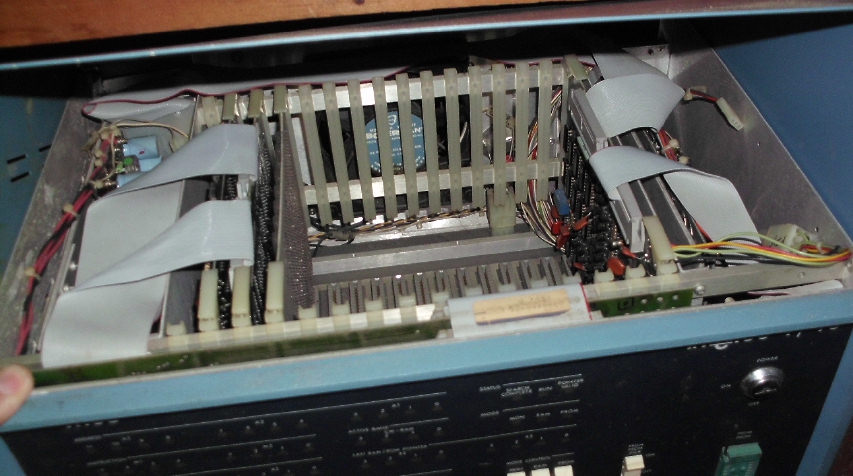
Inside Intellec 4.
Fredriksen disassembled Magic Carpet pinball machineto Gottlieb, who stood at Nutting’s house to test his signals and prepare for future difficulties (Fredriksen 1984/01/03 pg 157-158; Fredriksen 1984/01/05 pg 135; Nutting 1984/01/06 pg 101-102, 116-117). In June 1974, Nutting met with Bally to find out if the company could fund this independent game development. Fredriksen and Nutting showed Bally a Super IQ machine and promised to create a pinball machine based on this technology, and Bally agreed (Fredriksen 1984/01/03 pg 171-173; Nutting 1984/01/06 pg 115). Thanks to the budget received from Bally management, they officially left MCI (along with several other employees) to create Dave Nutting Associates (Fredriksen 1984/01/03 pg 180-181; Nutting 1984/01/06 pg 117, 119) in late June .
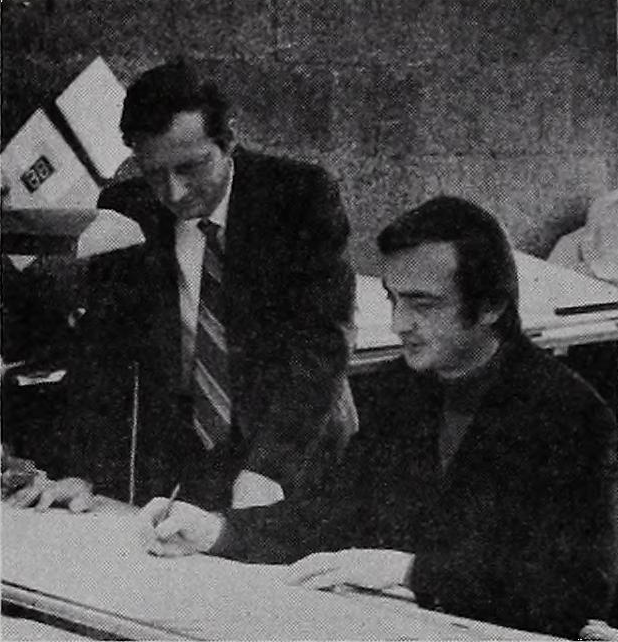
Duane Knudston (left) and Dave Nutting (right).
Nutting asked the head of Empire Distributing, Joe Robbins, to send him the last two Bally pinball machines, which arrived in early August. These were two not yet sold on the Flicker pinball machine market.which Bally just sent into production (Nutting 1984/01/06 pg 122-123). The joyful team began to transform one of the machines under the microprocessor. Like all other developers, they had to connect the 4004 development system with a cable machine and try to translate each function into software (Fredriksen 1984/01/03 pg 193). Natting had ideas for more interesting pinball machine designs (Fredriksen 1984/01/03 pg 182-183), but in order not to scare Bally very much, he especially wanted to create a working semiconductor prototype, and not just demonstrate new functions (Nutting 1984/01 / 06 pg 129-130).
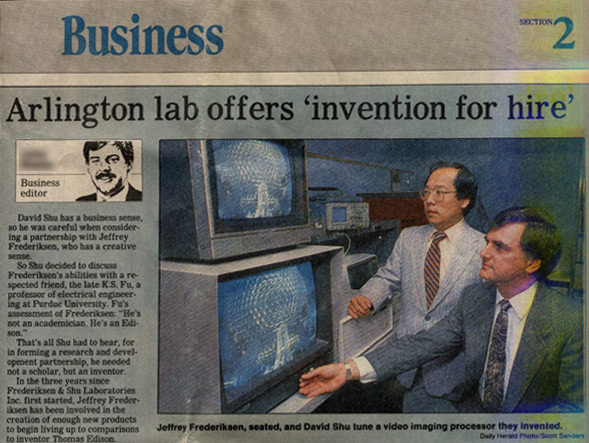
Jeff Fredriksen (right).
Fredriksen, the only one with computer experience, became a programmer. He modified the teletype to create code that could be read into the Intel EPROM (Fredriksen 1984/01/03 pg 151). Nutting connected a Fairchild digital display to the machine and tied a corresponding function to each relay. Knudston and Dave Stewart worked on circuits, and Paul Smith did connections directly (Fredriksen 1984/01/03 pg 192; Fredriksen 1984/01/04 pg 110-111; Nutting 1984/01/06 pg 124-126). In the first test, conducted in a week or two, they first tried to play the game Flicker (Nutting 1984/01/06 pg 128). The machine started working from the very first start, and this is practically a miracle for any electronic engineer. However, when they began to play, they found that the point counter was completely faulty. His behavior was unpredictable, which meant
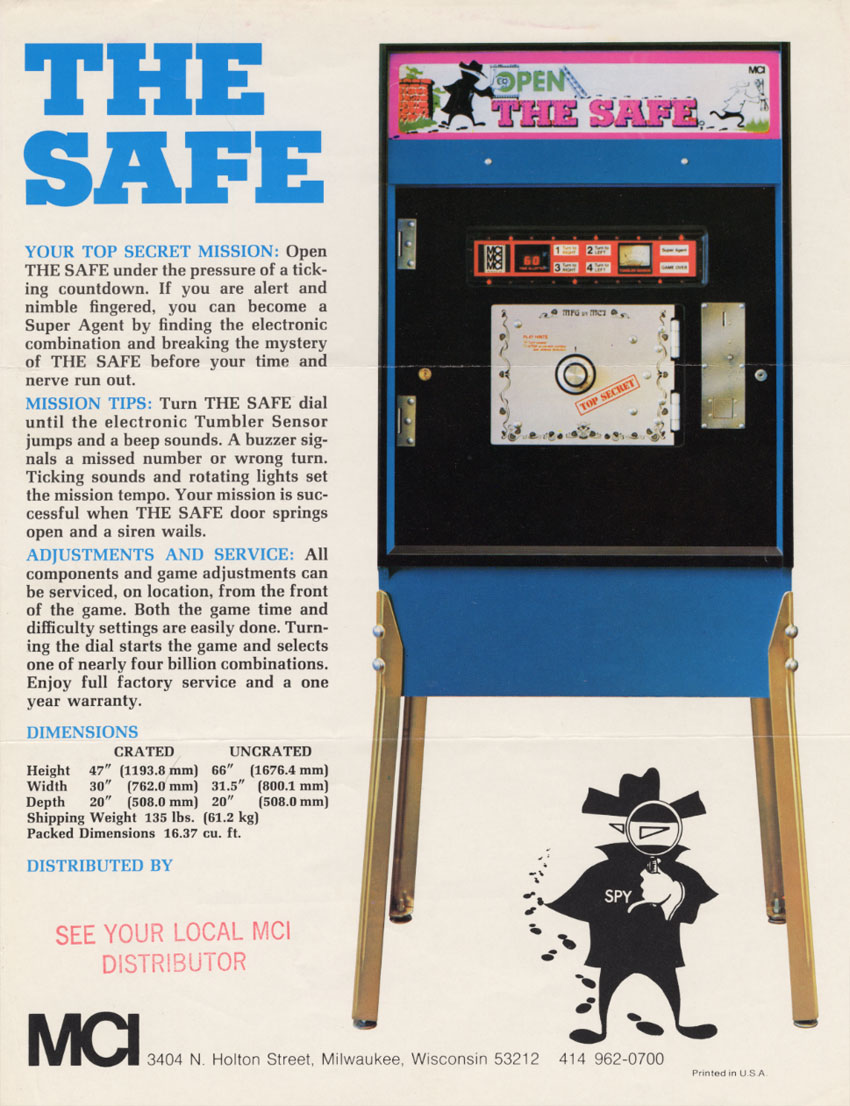
A semiconductor game that Fredriksen created before using a microprocessor - The Safe, 1974.
However, the solution was quite simple. They had no problems with electrostatic noise, because they had already developed a semiconductor arcade machine called Safe in MCI (Fredriksen 1984/01/03 pg 127-128, 198-200; Nutting 1984/01/06 pg 102-103). In fact, the problem was that the processor was very frisky. He turned on the pinball table too fast. At first, Fredriksen was worried that the microprocessor would not have enough speed, but it turned out that it was too much! (Fredriksen 1984/01/03 pg 132-134) Fredriksen wanted Nutting to create a relay to cope with this problem, but in order not to complicate the design, he simply asked Fredriksen to add a delay to the system. It worked perfectly, and soon they already had a fully featured Flicker machine (Tzannes pg 10; Smith).

The “heart” of the Flicker prototype is Bally Brain.
Over the next few weeks, they were able to remove the Intellec system from the machine and replace it with the only small printed circuit board that Nutting called Bally Brain, and a week later they held a demonstration (Fredriksen 1984/01/03 pg 194-195, 198; Nutting 1984/01/06 pg 133-134). On September 26, 1974, a demonstration of the device was held for the four Bally leaders, and they were smitten. The head of the development department, John Britz, reacted to it with such distrust that he began to look for the end of the machine's power cable in search of a hidden mainframe. Nutting and Fredriksen could not hold back the delight, showing Briton the internal circuit board. Besides her, there was nothing in the car (Nutting 1984/01/06 pg 134-139).

Inside the Flicker prototype. There is nothing more there!
Bally immediately became interested in technology, but for unknown reasons, despite Natting's insistence, she did not want to use the Dave Nutting Associates construction (Nutting 1984/01/09 pg 4-5; Fredriksen 1984/03/19 pg 114). Nutting believed that the company did not want to pay him a license fee (Smith), but he should be wary of his opinion, because the end of his relationship with Bally was not cloudless. Between the lines you can read that the company probably felt that the design of Nutting would not allow for an improvement in its production. Given that Bally managed to create Bally Alley, she did not want to come to a dead end with potentially weak structures that could not be implemented (Englehardt pg 189-192).

Frank Bracha (left).
One of the participants of this meeting, Frank Brach, took Nutting's prepared materials and showed them to William Englehardt, who worked on the microprocessor slot machine project (Englehardt pg 186-188). Englhardt was asked to begin designing an electromechanical pinball machine based on Intel 4004 (Englehardt pg 188). The company decided to use the four-player version of Flicker called Boomerang . This model also suffered from noise problems, but Englehardt was a military engineer, so he was able to solve these problems and was able to test several machines in May 1975 (Englehardt pg 198-201). The company then decided to conduct more extensive testing of the equipment using the Bow and Arrow machine.: about 20 microprocessor versions were created, which were put side by side with electromechanical machines to compare the amount of coins earned (Englehardt pg 194-196).
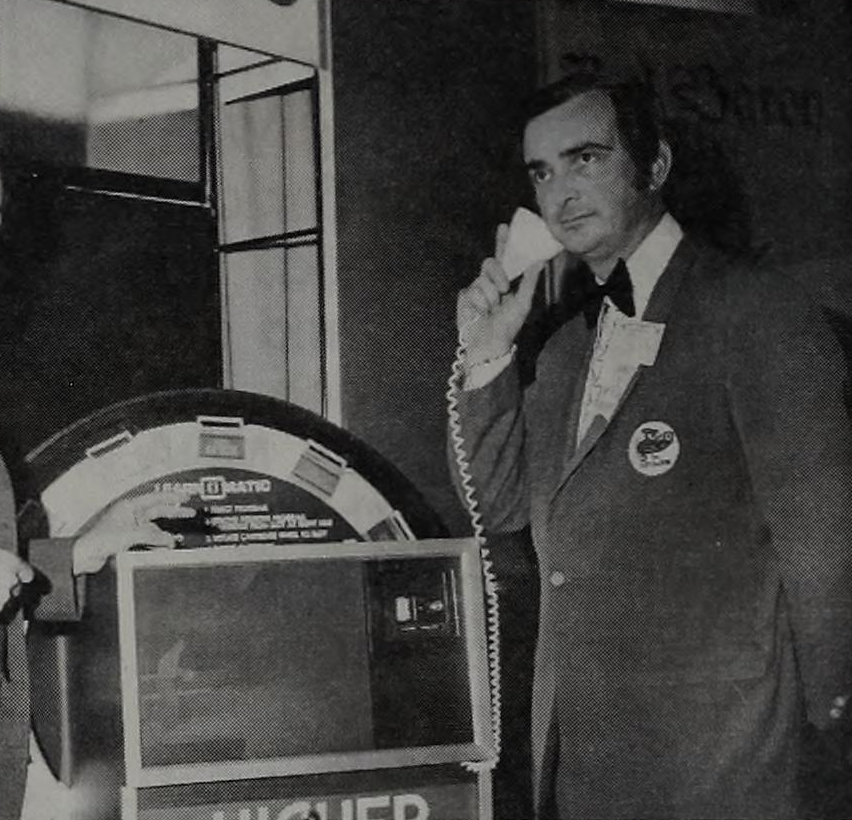
Dave Nutting is looking forward to the next call.
Before the official release of Bally semiconductor pinball machines, it will take another year, but the company received a critical patent from Englhardt and Brachy, and over time acquired a patent from Dave Nutting Associates(Fredriksen 1984/01/04 pg80; Nutting 1984/01/06 pg 150). Nutting wanted to try to sell the technology to other pinball makers. At first he turned to Gottlieb, but she was not interested. As a result, he was able to sell it to companies from Arizona (this is explained below) (Nutting 1984/01/06 pg 142-144). Meanwhile, Nutting acquired several new microprocessor development systems and worked with the Intel 4040 chip (Fredriksen 1984/03/16 pg 133-134). Fredriksen created a pistol game called “Weird Animal Kingdom” on the basis of this system, but it is unclear how far he went in its development (Fredriksen 1984/03/19 pg 32, 40).
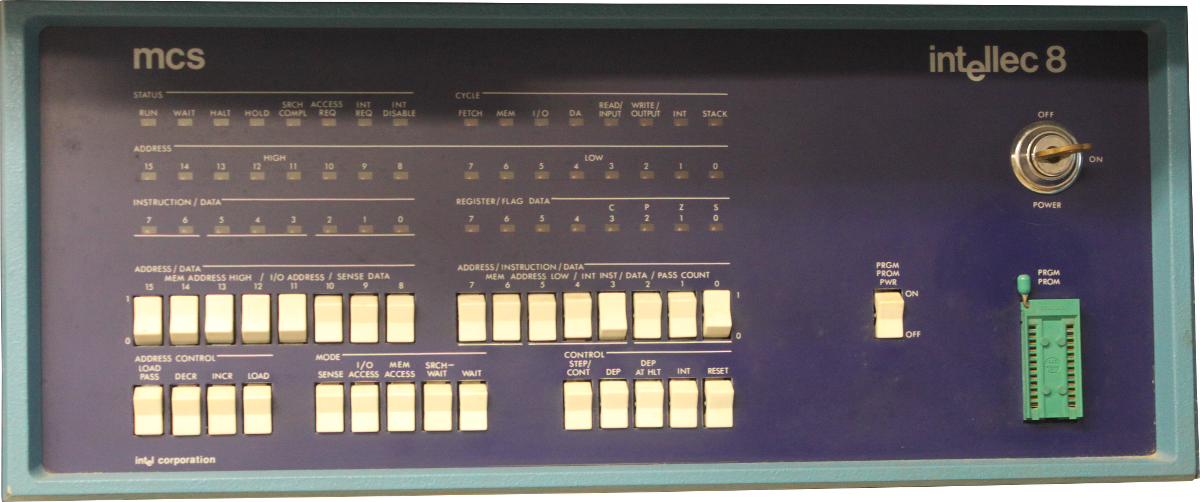
Intellec 8 development system for the Intel 8080.
But it has already become obvious that the 4-bit microprocessor is simply not able to independently control the display. Therefore, the company acquired the Intellec 8 development system for the 8080 chip and worked on a new proof of concept to demonstrate it to Bally shortly after the failure of the pinball machine deal. Fredriksen did not have the best hardware, and he was not the best programmer; nevertheless, he managed to get a display of noise on the screen controlling the video display. This was not so much, but when Nutting showed a Bally demonstration, the company approved the development of a video system, which in the future turned into Gun Fight (Fredriksen 2011; Nutting 2017).
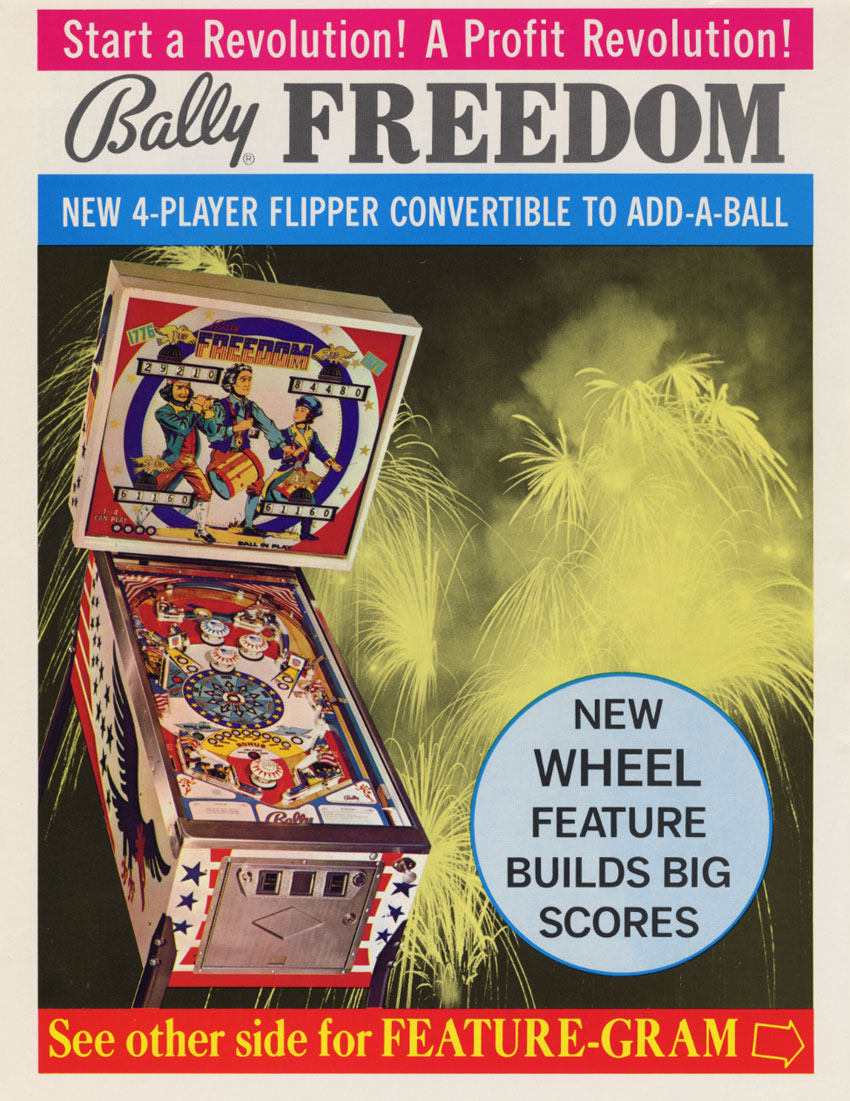
The first Bally pinball microprocessor model, released into production - Freedom, 1976.
Bally's active desire to use microprocessors and the simultaneous unwillingness to use them was also characteristic of other large manufacturers of pinballs. Gottlieb invested in semiconductor architecture research as early as 1972, but nevertheless, this company is notorious for having mastered this technology last. Williams went through several stages of studying the microprocessor market, and as a result came out on it, which bore fruit. These timid steps not only led to the formation of a stunning trace of the documents on the basis of which this article was compiled, but also helped to understand the conservatism of the industry and see the "new blood" that led it to the boom era of the 1980s.
Mirco Games
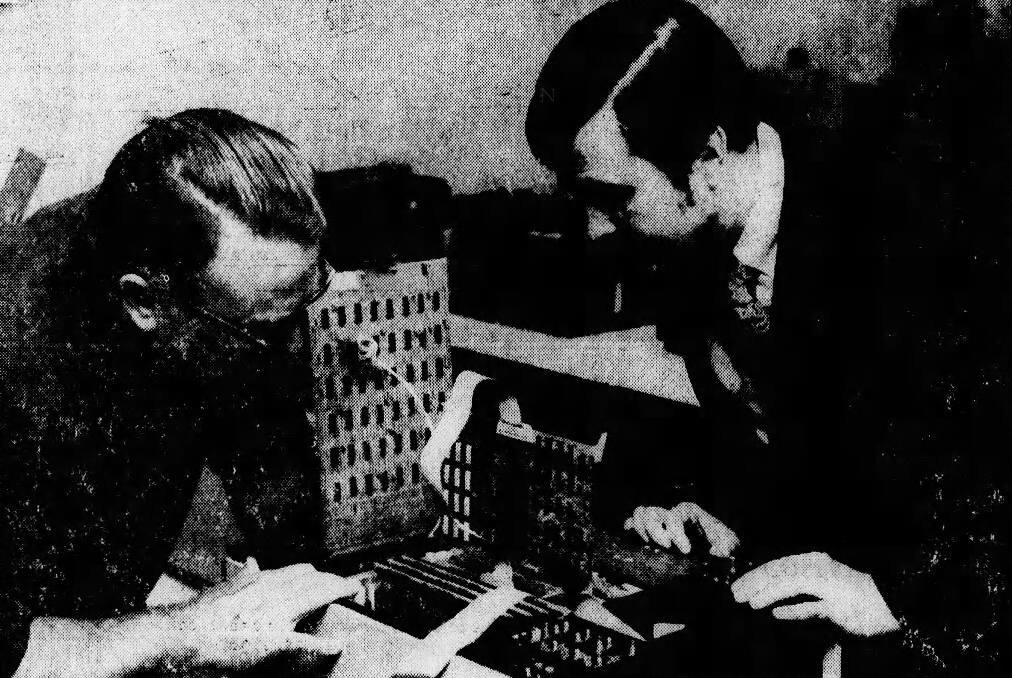
Mirco Games engineers are studying test equipment.
Mirco, located in Phoenix, Arizona, was an ideal candidate for working with microprocessor games, because this company was already engaged in the creation of test equipment for mainframes and individual components. She has been involved in the Pong boom since 1973, but the company's main gaming business was more connected with table football than with video games. A new opportunity arose when David Nutting proposed the company to produce a pinball machine created by him (Smith).

Home pinball Fireball has become David’s second offer to Mirco Games.
At that time, Nutting and Fredriksen had already made attempts to transfer logic to other microprocessors. They started with the Intel 4040, the next step after the Flicker machine, and used it in a demonstration for the Mirco company for the Gottlieb Flying Carpet machine. They put the machine in August 1975 with unfinished software, but Mirco thought that it could create something inside the company because the company had engineers from Motorola (Nutting 1984/01/09 pg 10-12; Smith). The agreement with Nutting remained in force, but the company did not fully utilize its design. Bally offered Natting with his team to create a home pinball machine, first based on the famous Wizard table and then based on the game Hocus Pocus(eventually the project became a home pinball table Fireball ). They offered this game on Mirco's F-8 processor, but it was actively developing a new design at that time (Fredriksen 1984/01/04 pg 54-56, 74-76; Nutting 1984/01/06 pg 144-147).

Mirco's Spirit of '76 pinball faulty circuit board.
The project based on the Motorola 6800 processor was led by Cash Olsen, one of those very former Motorola engineers. They copied the design of the playing field machine Gottlieb Magic Carpet, which they sent, and created a few simple prototypes. Called Spirit of '76in honor of the upcoming bicentennial of the United States, it was the very first pinball microprocessor that began selling on the 1975 MOA show. Alas, it lasted only a week. The device shown on the MOA was only a prototype, but the demand was so great that Mirco demanded that engineers immediately put it into production. Technical problems led to the fact that the devices immediately “died”, and due to Mirco’s lack of experience in creating pinball automatics, the power buses were completely defective. The company sold several devices in November 1975, then suspended sales until March of the following year, but as a result sold only 500 copies, most likely at a loss (Smith).

Fairchild F8 development system.
However, Mirco had another game she demonstrated at MOA, rival Gun Fight: PT-109. The same engineer Cash Olsen worked up to pinball on this project. He had experience with a microprocessor and analyzed possible suppliers. The company decided to use Fairchild F-8 because Fairchild provided much more support to potential developers, at least in the region where Mirco was located. This was the beginning of a relationship with Fairchild, which as a result would lead to a catastrophe. But for now, this relationship was quite useful, given the hard work that Olsen had to put in parallel with the work on the Spirit of '76 (Smith).

Demonstration of PT-109. The only known photo of the game at work (upper left).
The PT-109 was a submarine game that consisted of 300 chips placed on tightly-filled logic boards. Olsen developed the game on a time-sharing GE mainframe. It took a lot of time to make changes, so it was not enough to fix individual bugs or add interesting gameplay innovations. Estimated as a whole, the game was not very interesting and sales were very modest, despite the positive reviews from the MOA. Most likely, the collapse of Spirit of '76 damaged its potential scale and format: the game was delivered in a "cocktail table" form factor, which was not very attractive to game hall owners in late 1975 (Smith).
The purpose of this article was not to provide a detailed description of the sources for the development of microprocessors or the definition of “first” authors. Rather, it explores the reactions and research of competing innovators. The experience of highly skilled mainframe programmers leaked into the entertainment industry, became its guiding force and set it a new direction. It was an interesting point, allowing you to look at the period of the formation of video games.
Arnold, Chuck. Personal interview, 2017.
Baer, Ralph. VideoGames: In the Beginning, published 2005 by Rolenta Press.
Bagnall, Brian. Commodore on the Edge, 2012.
Bristow, Steve. First deposition taken August 5, 1981. Second deposition taken August 6, 1981.
Cox, Gregory. First depositiontaken September 11, 1981. Second deposition taken September 18, 1981. Third deposition taken October 12, 1981.
Deposition Notice . Dated October 5, 1981.
Electronic Engineering Times . Gametronics Proceedings, Janaury 1977.
Englehardt, William . Trial testimony taken March 19, 1984.
Foster, Colin . Deposition taken October 5, 1979.
Fredriksen, Jeff. First trial testimony taken January 3, 1984. Second trial testimony taken January 4, 1984. Third trial testimony taken January 5, 1984. Fourth trial testimony taken January 6, 1984. Fifth trial testimonytaken March 16, 1984. Sixth trial testimony taken March 9, 1984. Interview conducted in 2011 from Balleyalley.com.
Hagley Museum Collection.
Hughes, Doug. Personal Interview, September 14, 2017.
Kayton, Irving . Trial transcript dated March 28, 1984.
Mayer, Steve. Interview by Alex Smith on July 7, 2018.
McEwan, Charles . Deposition taken January 31, 1980.
Nutting, David. First trial testimony taken January 6, 1984. Second trial testimony taken January 9, 1984. Interview with Alex Smith, 2017.
Reissue Examination . Dated November 6, 1982.
Schoeffler, James . Trial transcript dated January 26, 1984.
Shepperd, David. Personal interview, 2017.
Smith, Keith. All in Color for a Quater, 2016. Unpublished.
Thomas, Ken . Deposition taken August 19, 1981.
Trial Brief . Dated Janaury 4, 1984.
Tzannes, Alexis. Gameroom Magazine “ Found! The First Microprocessor Pinball Machine “ , June 1999.
Weisbecker, Joseph. FRED System manual dated July 1972.
Original Author: Ethan Johnson
